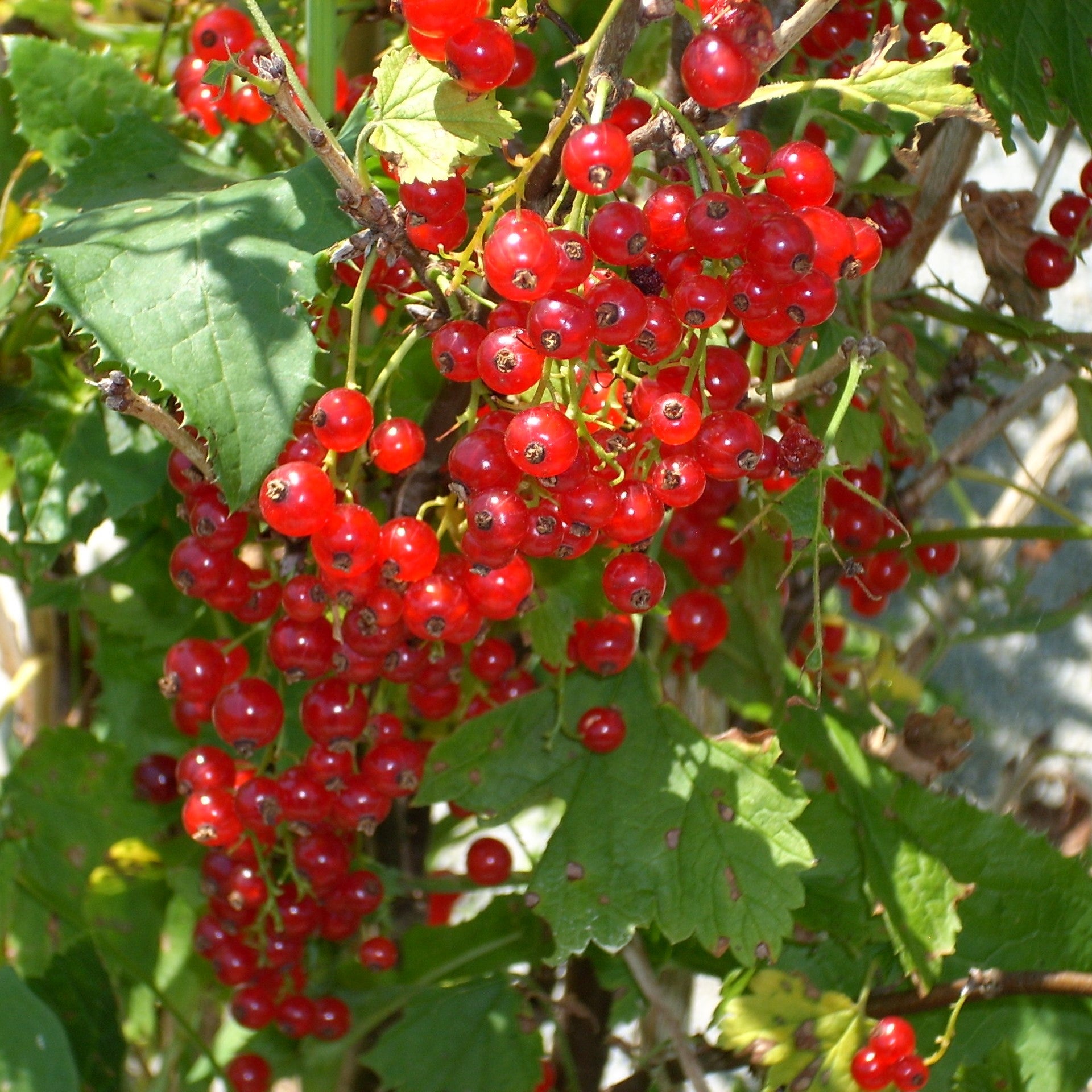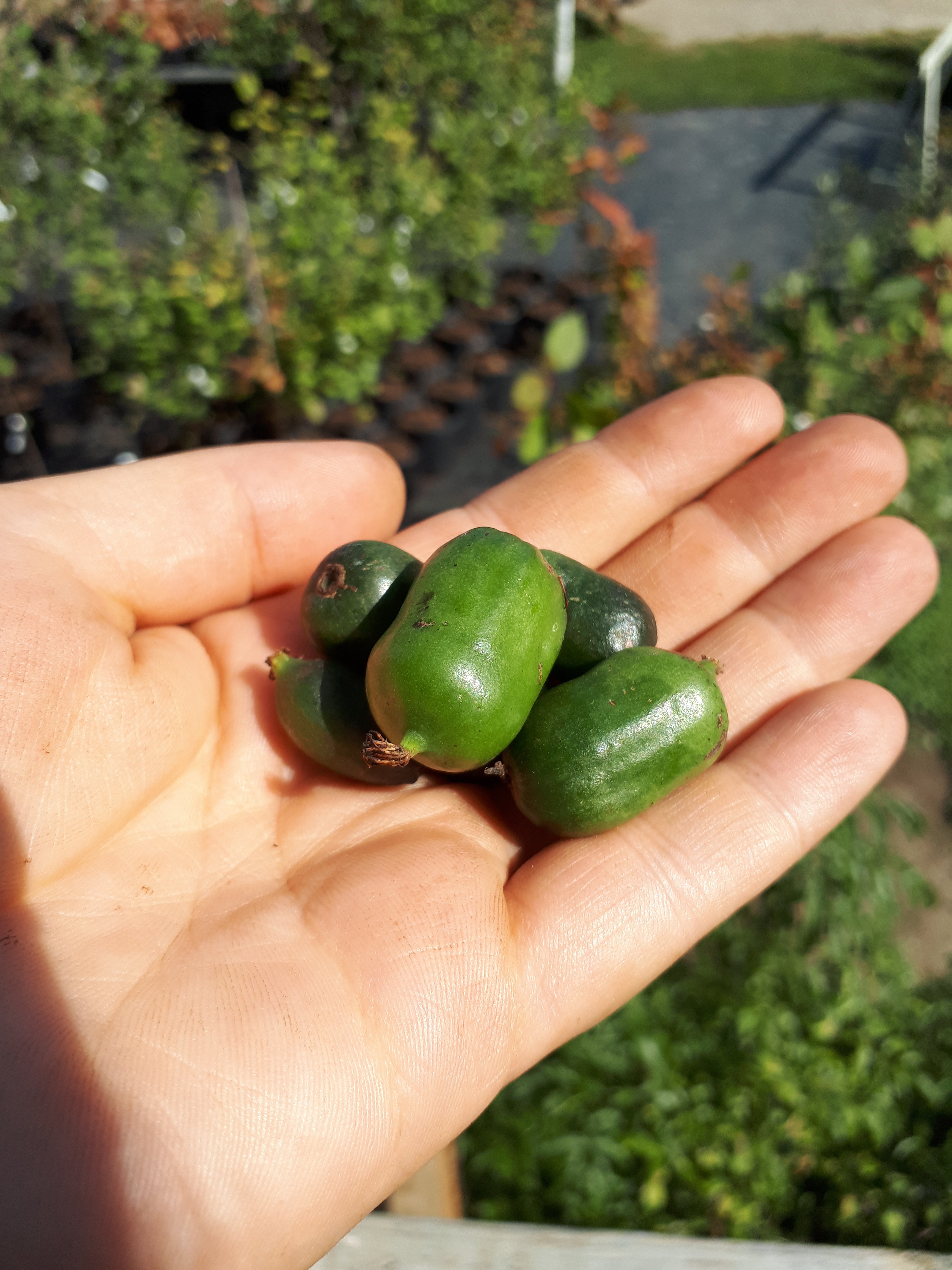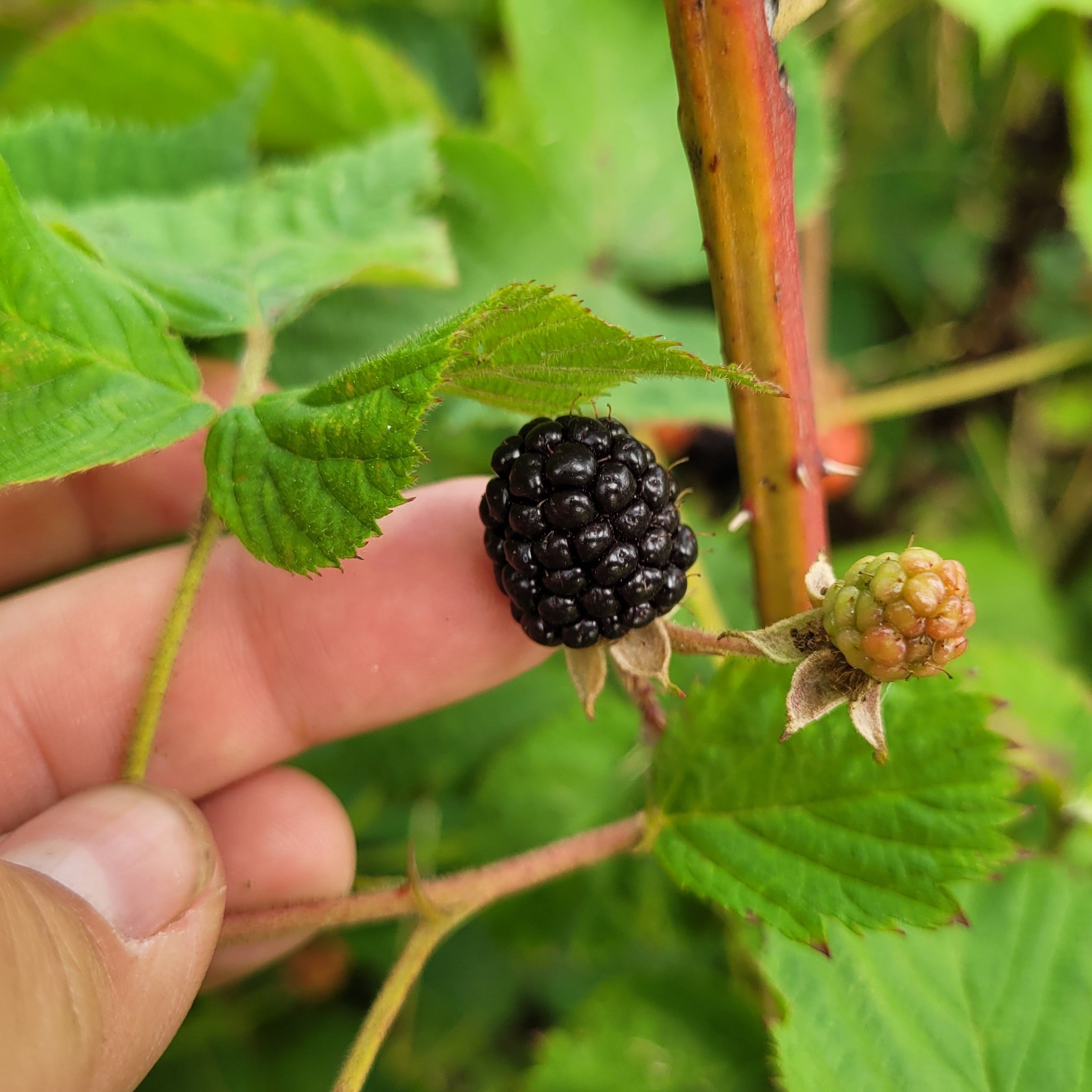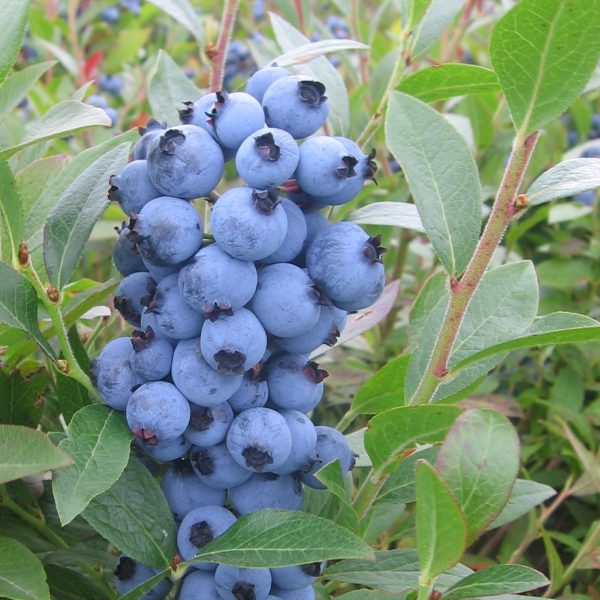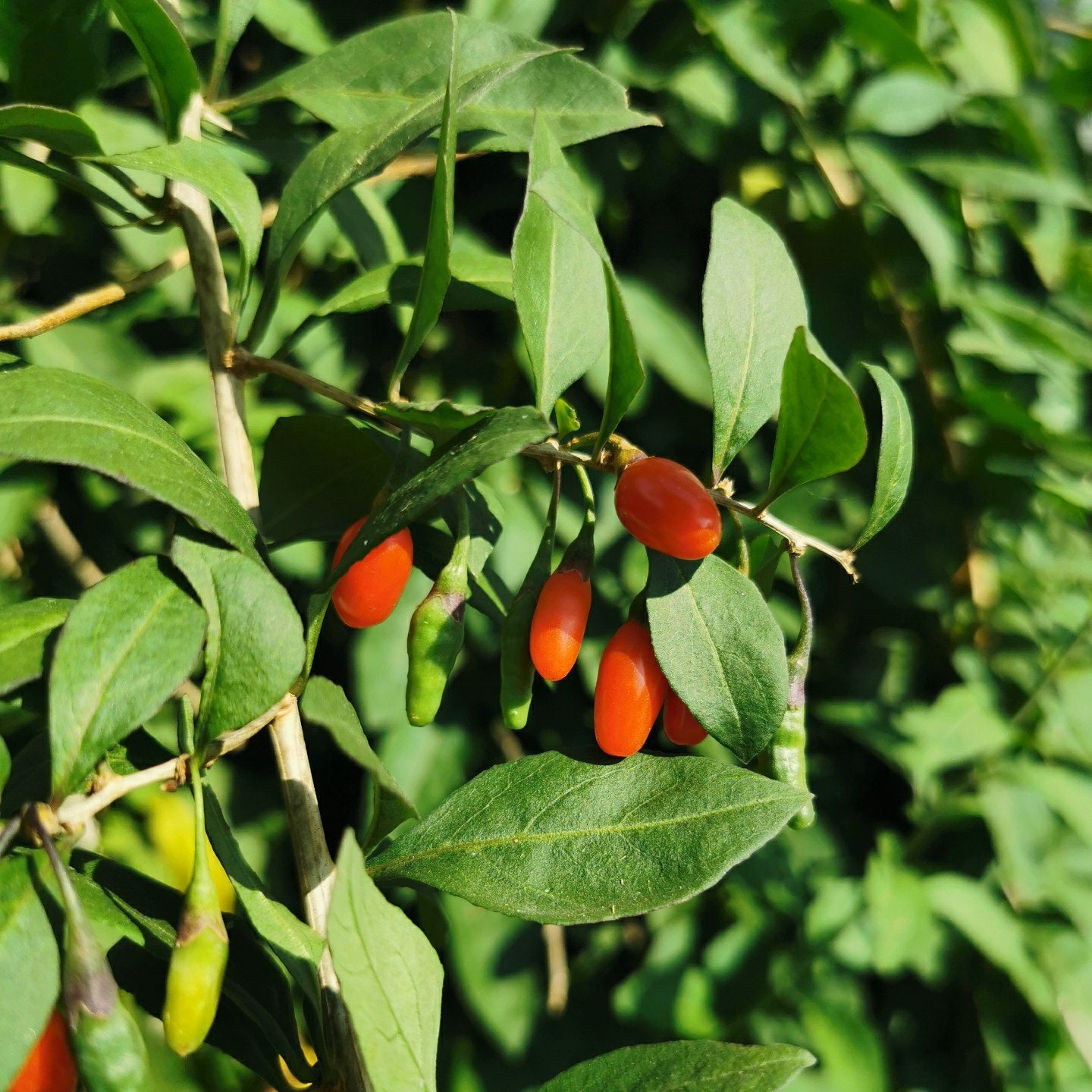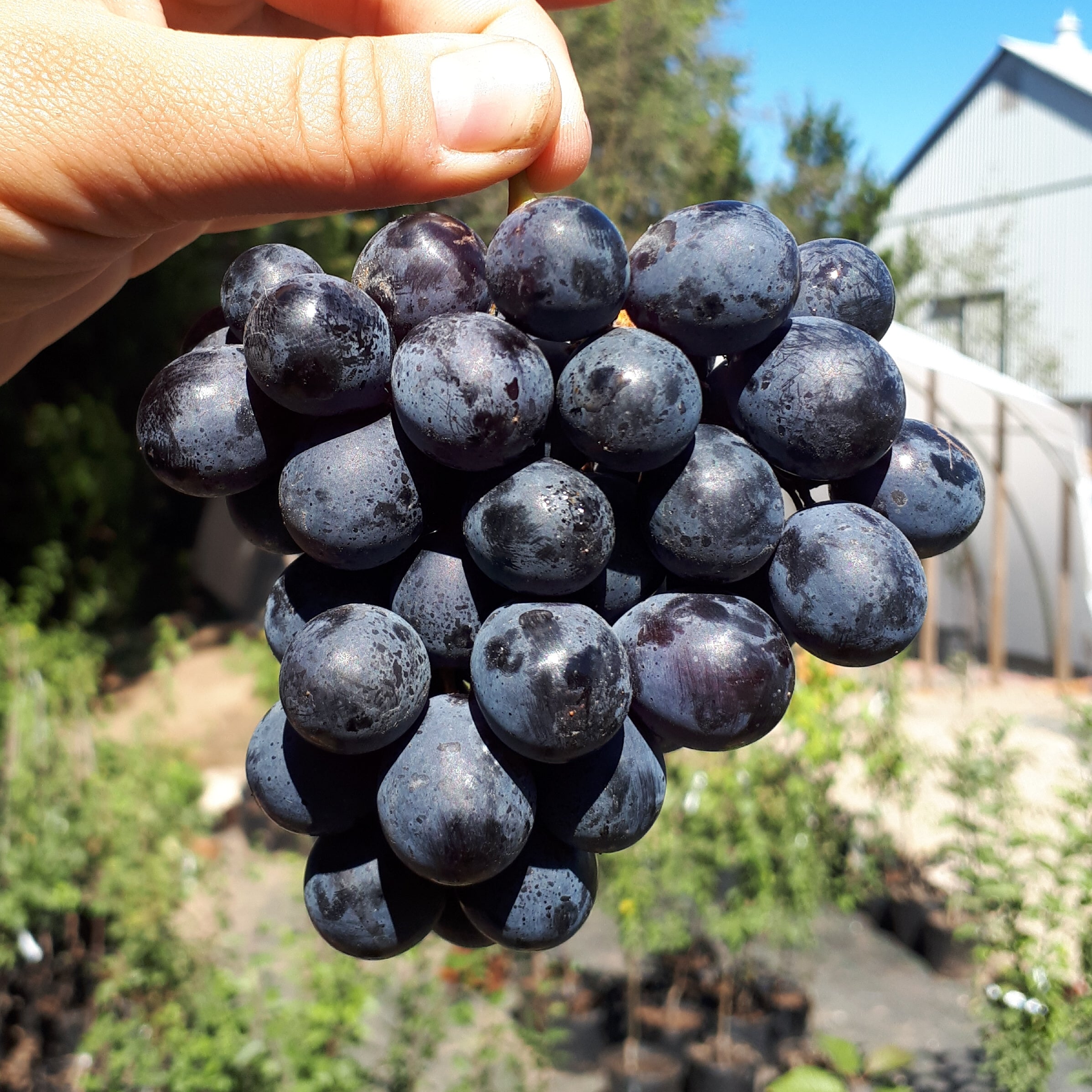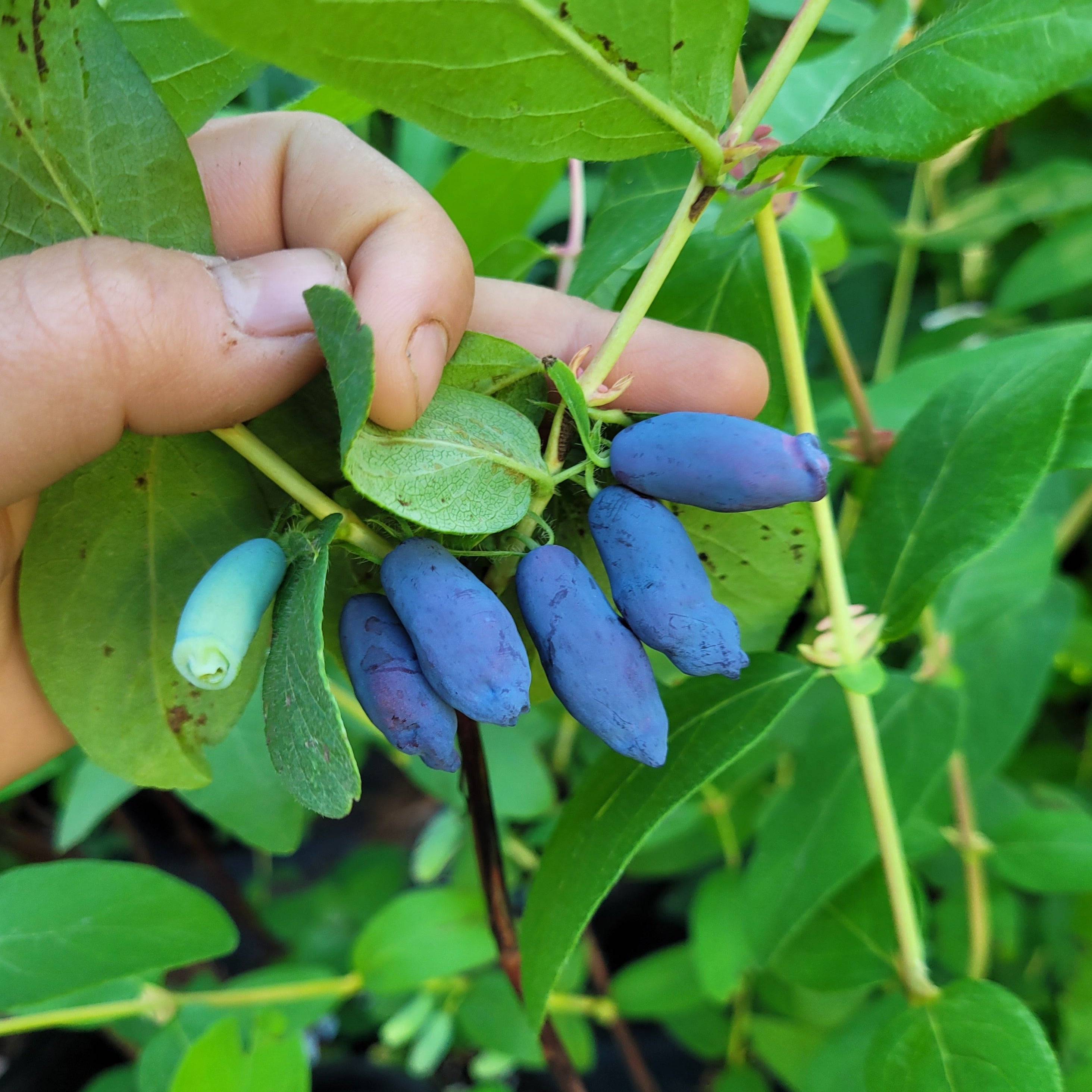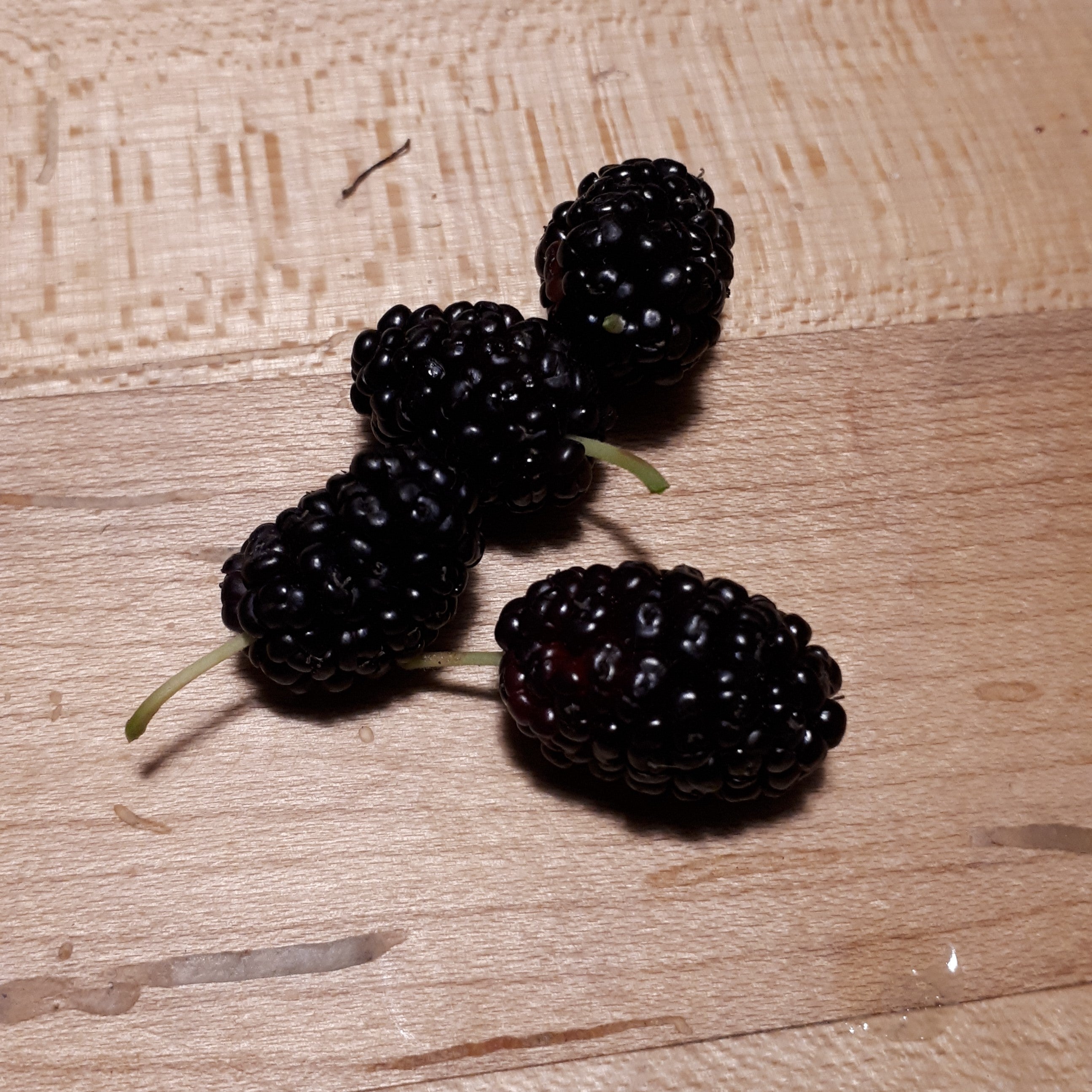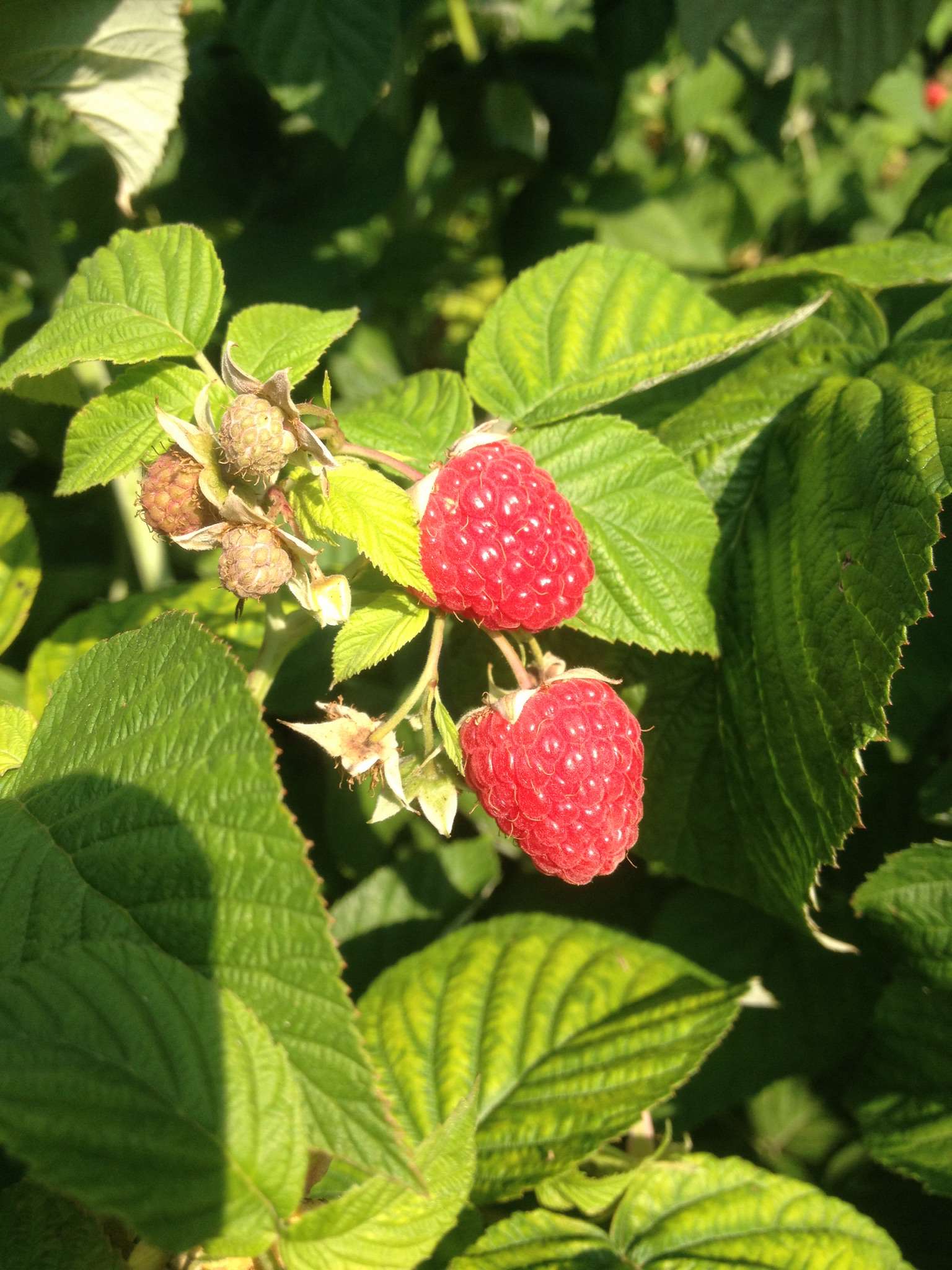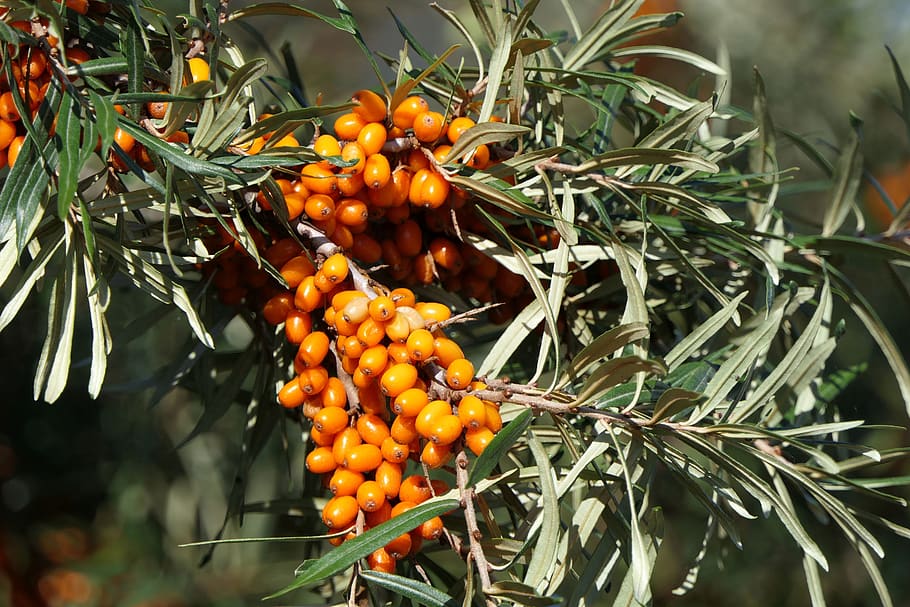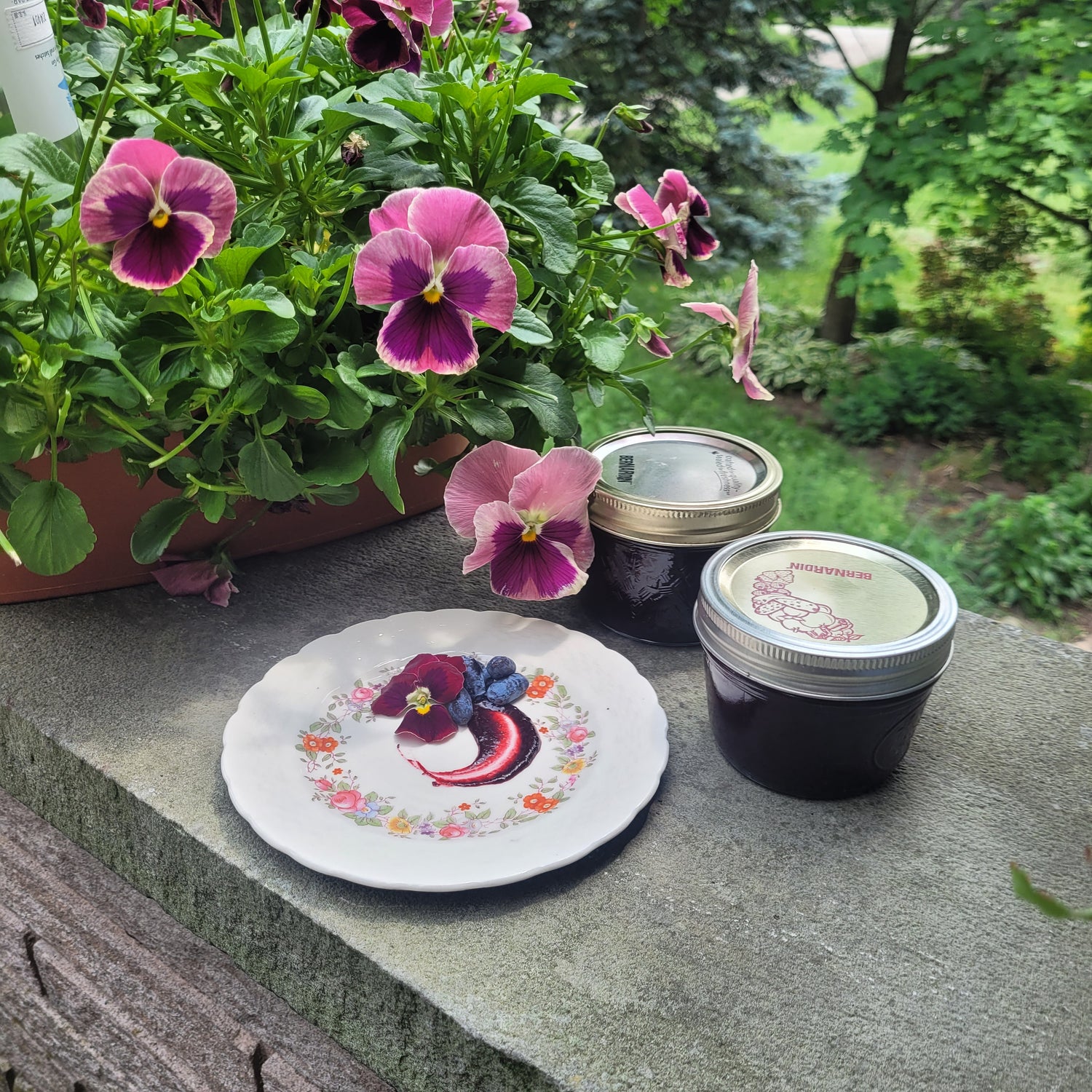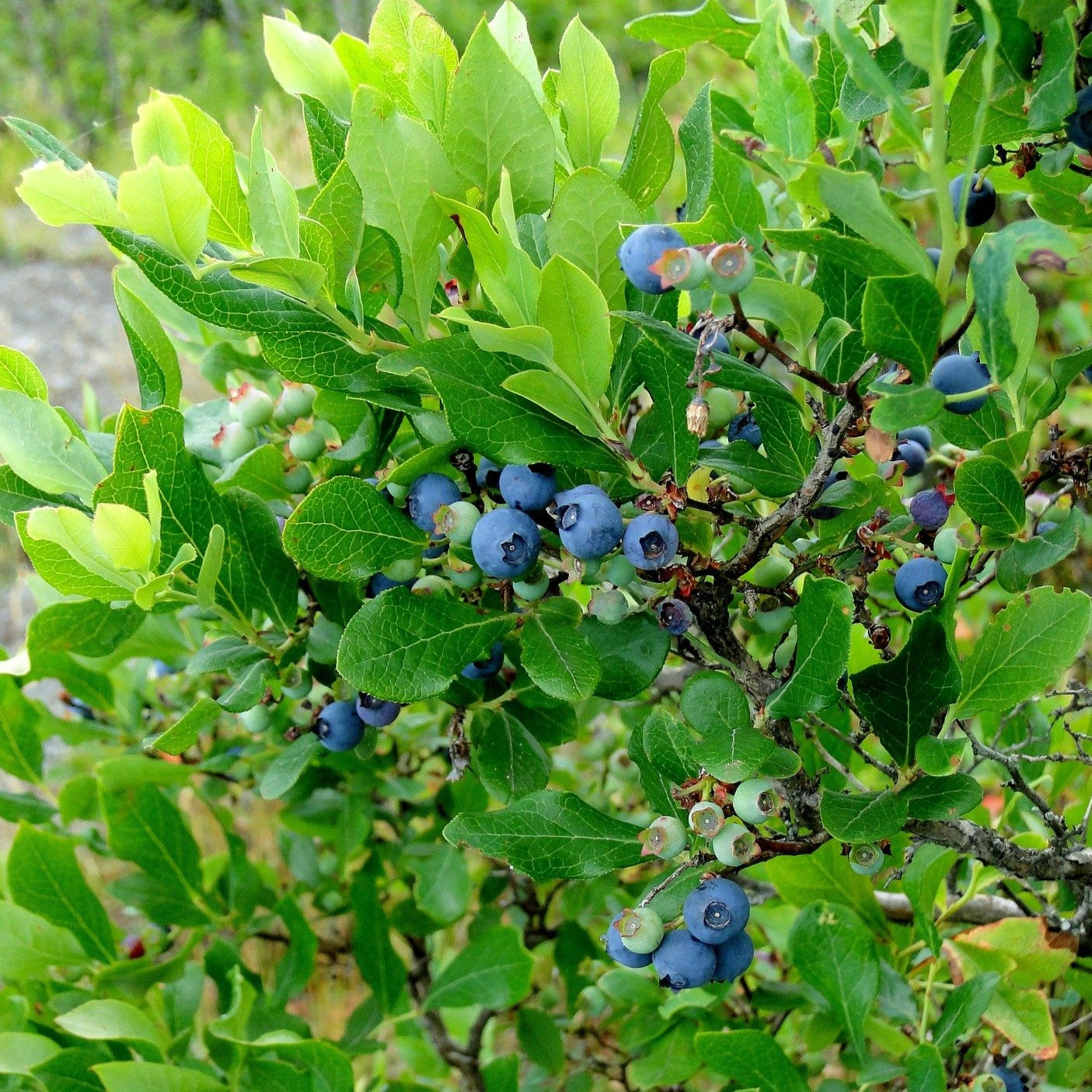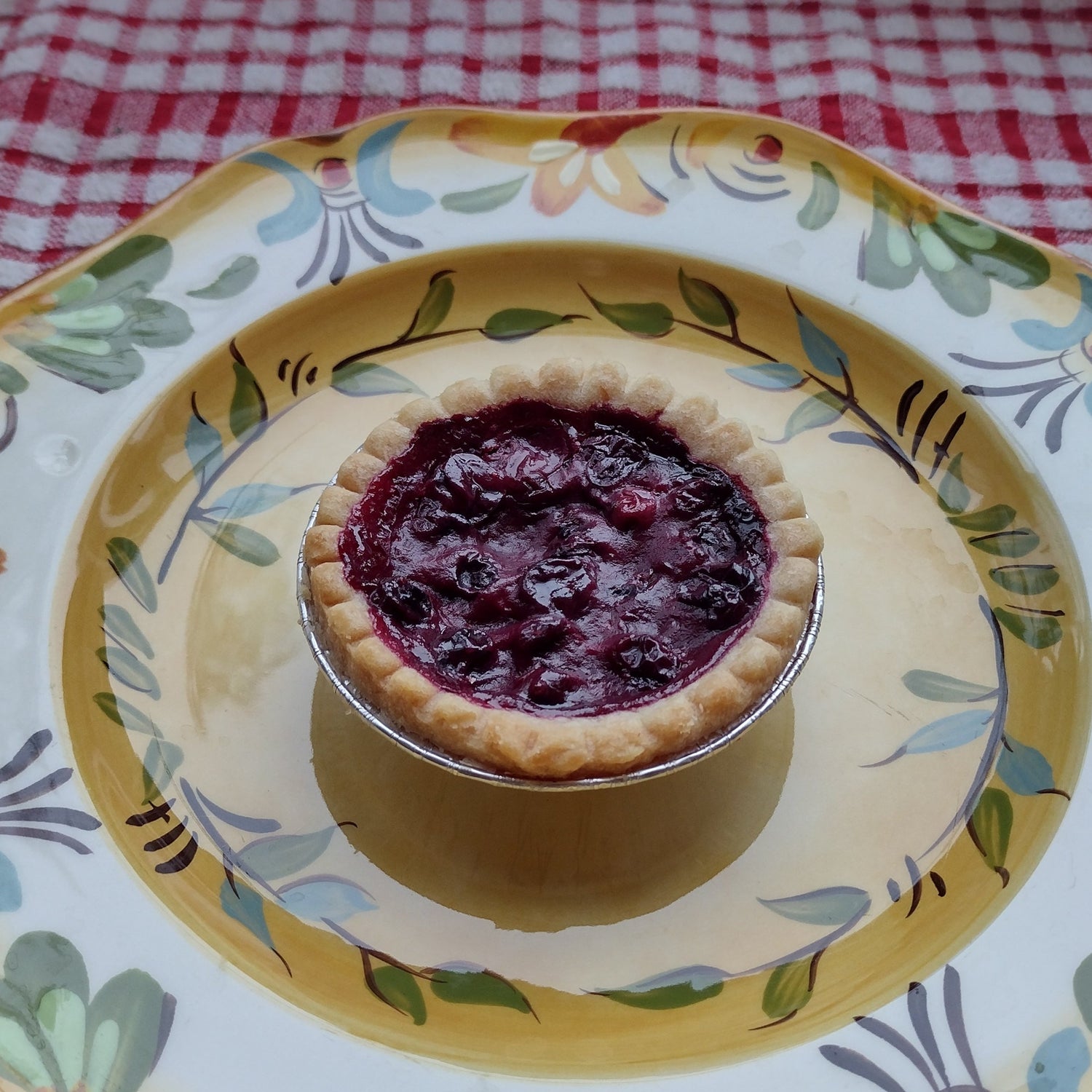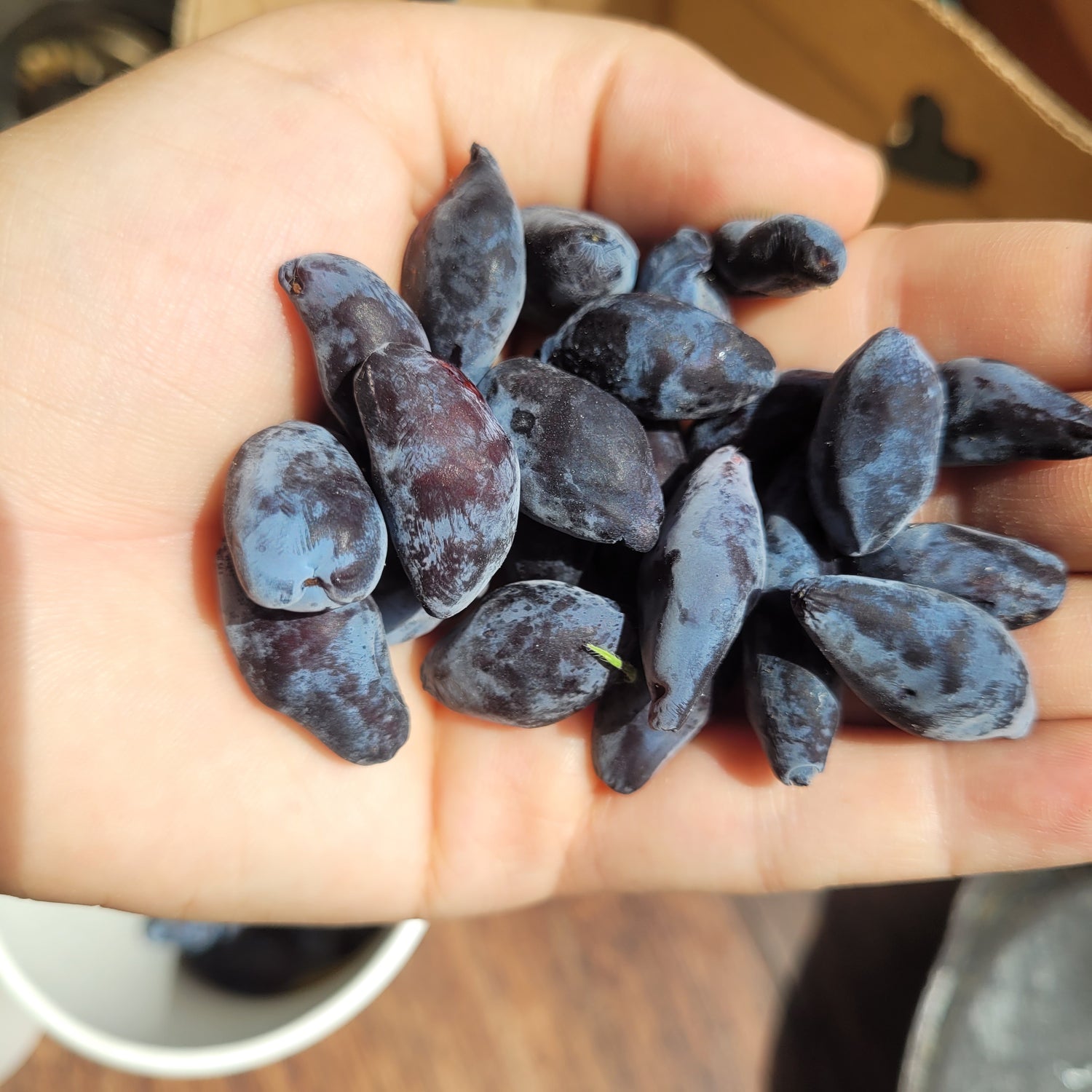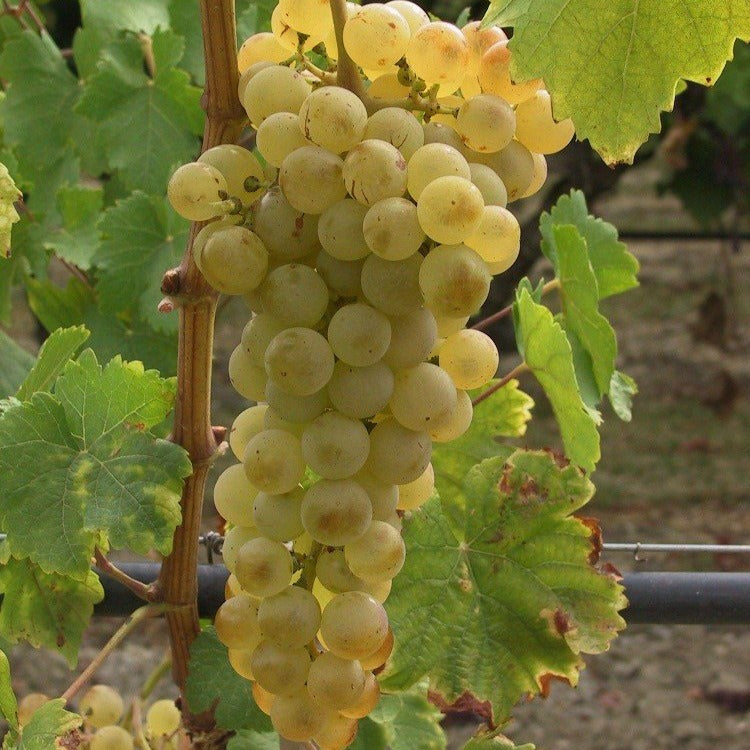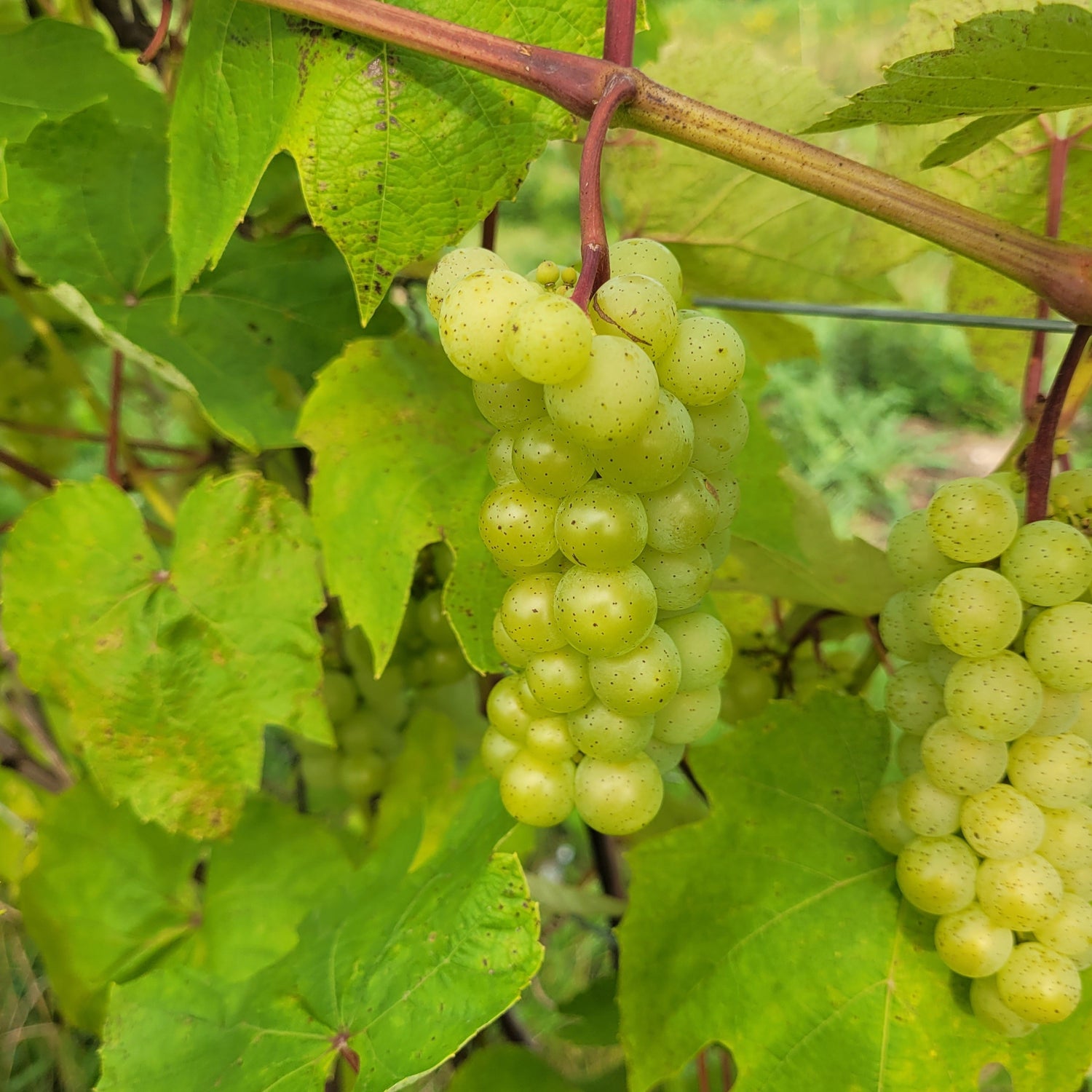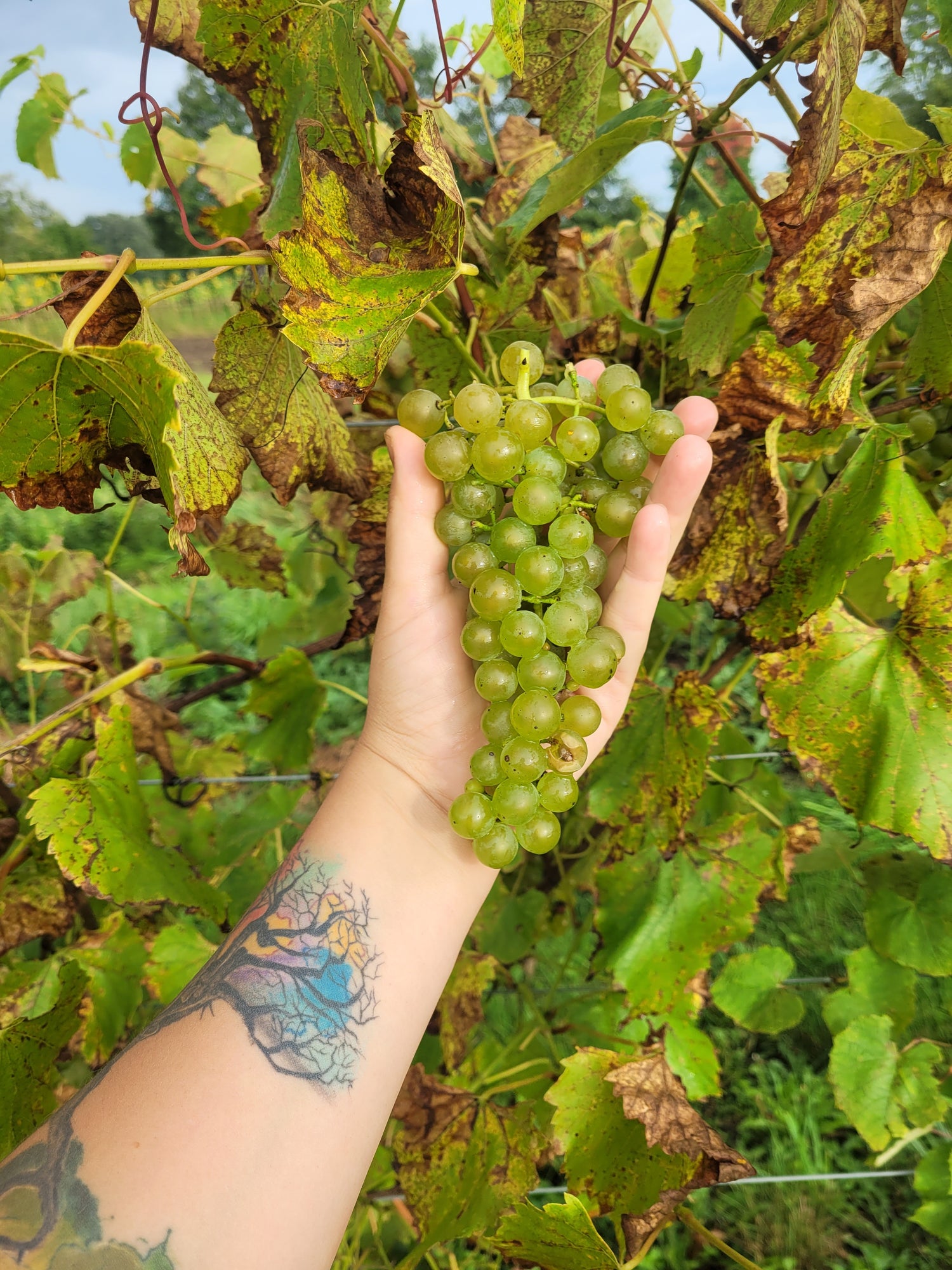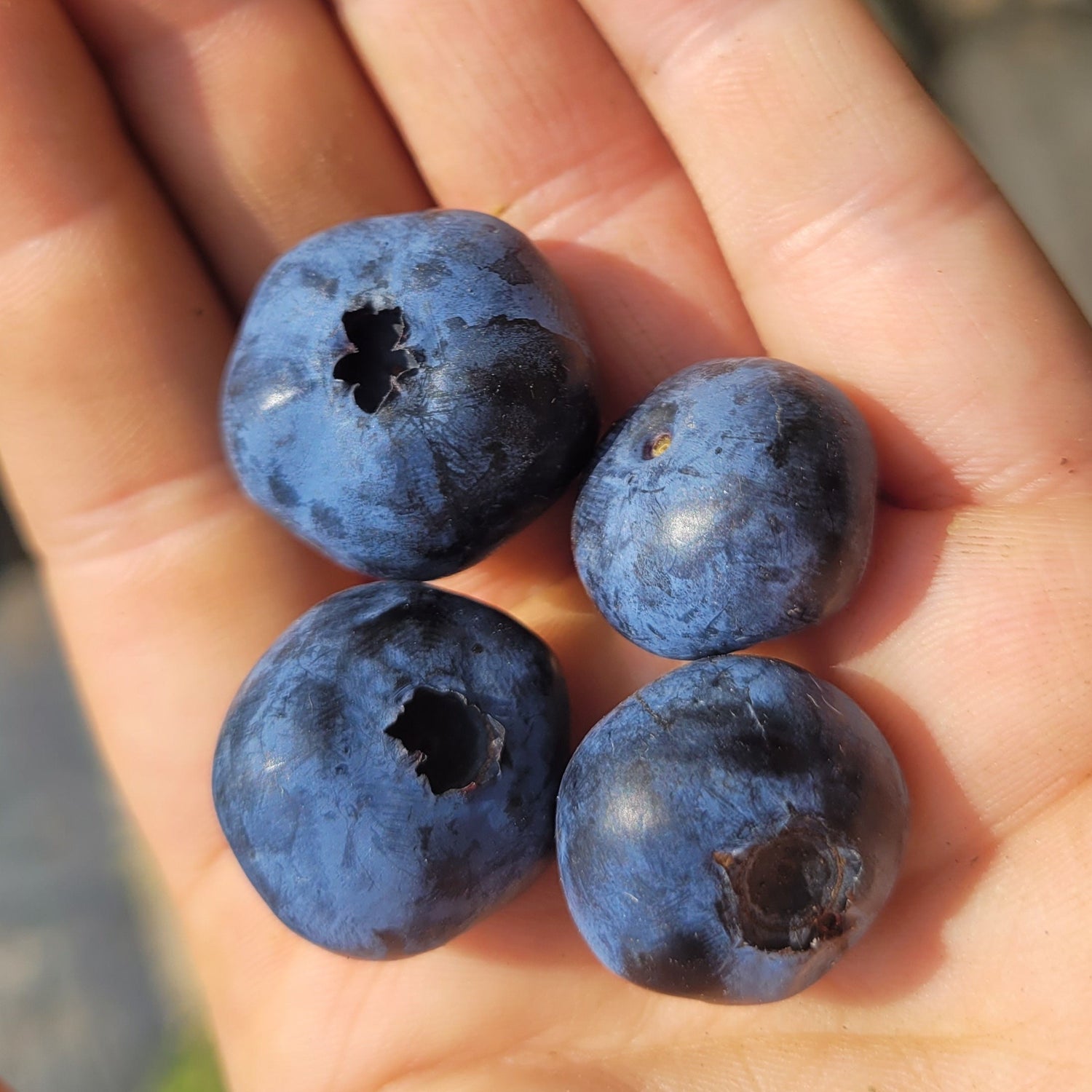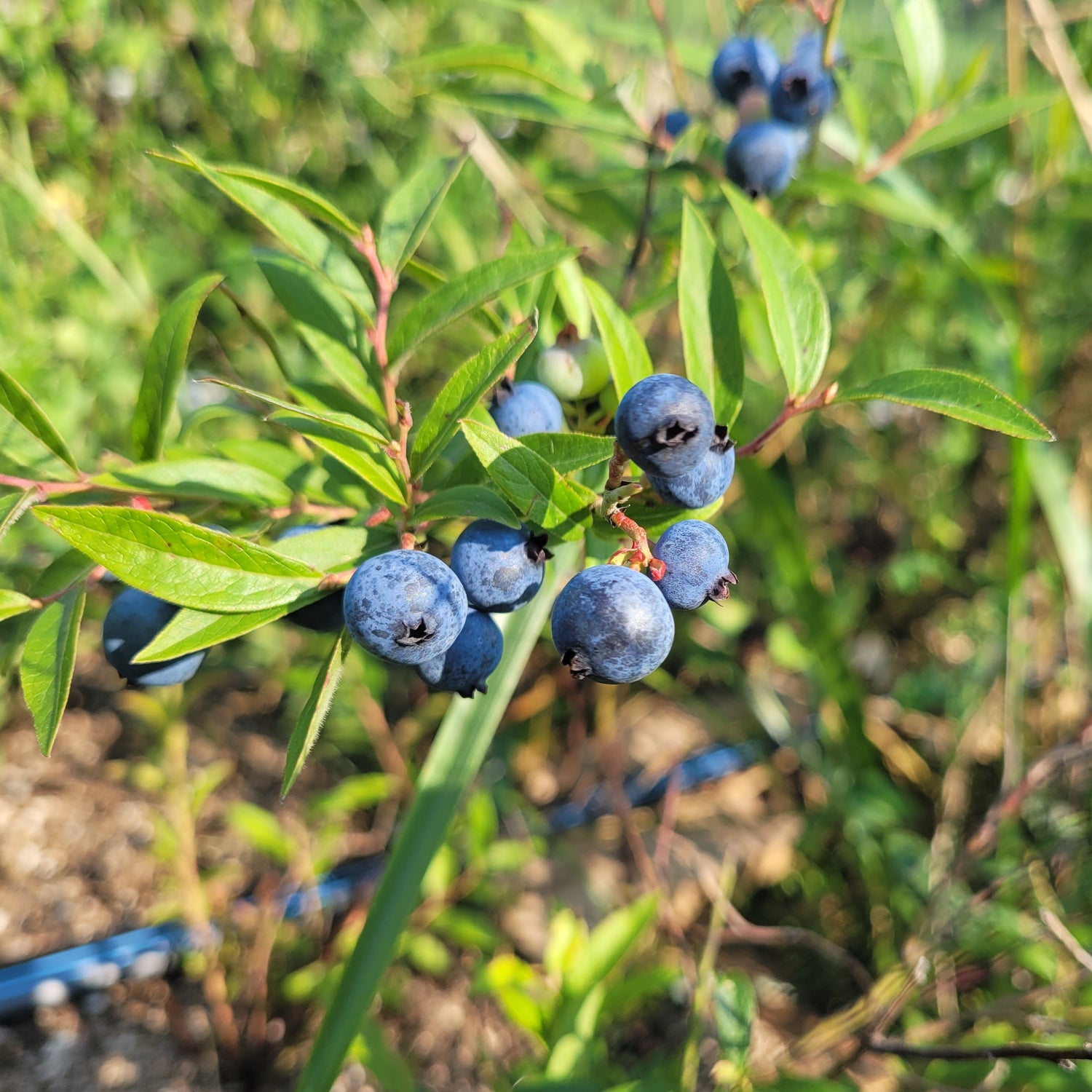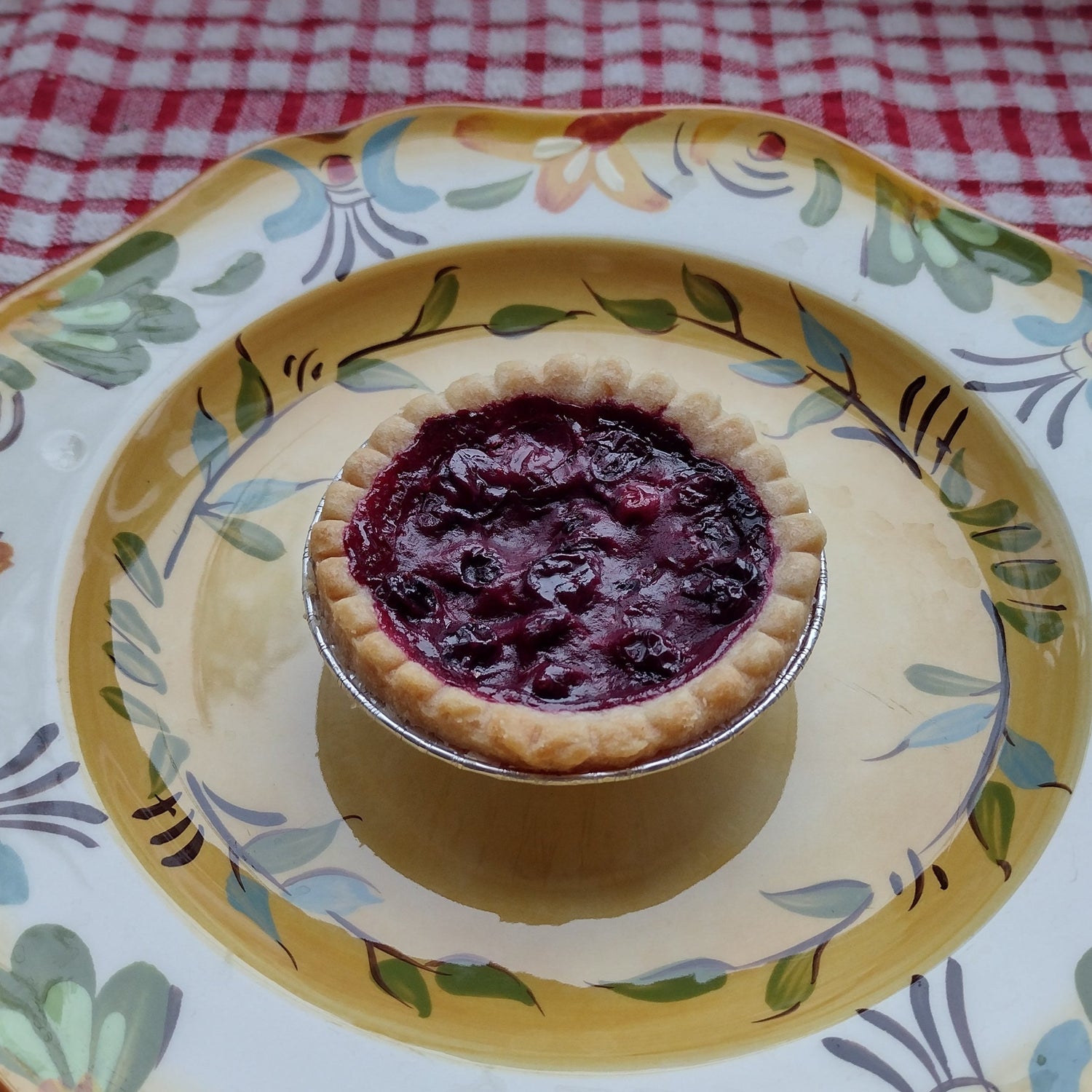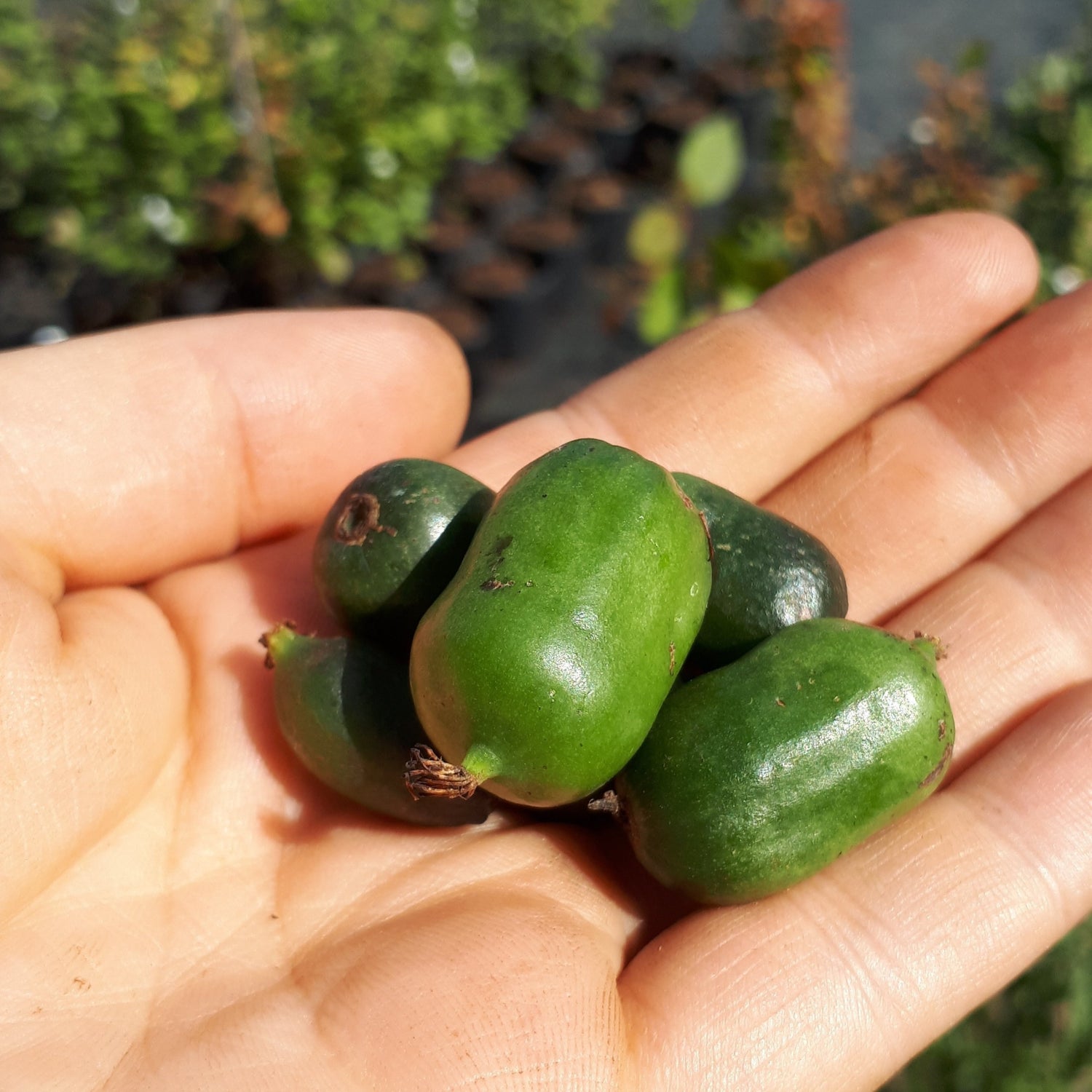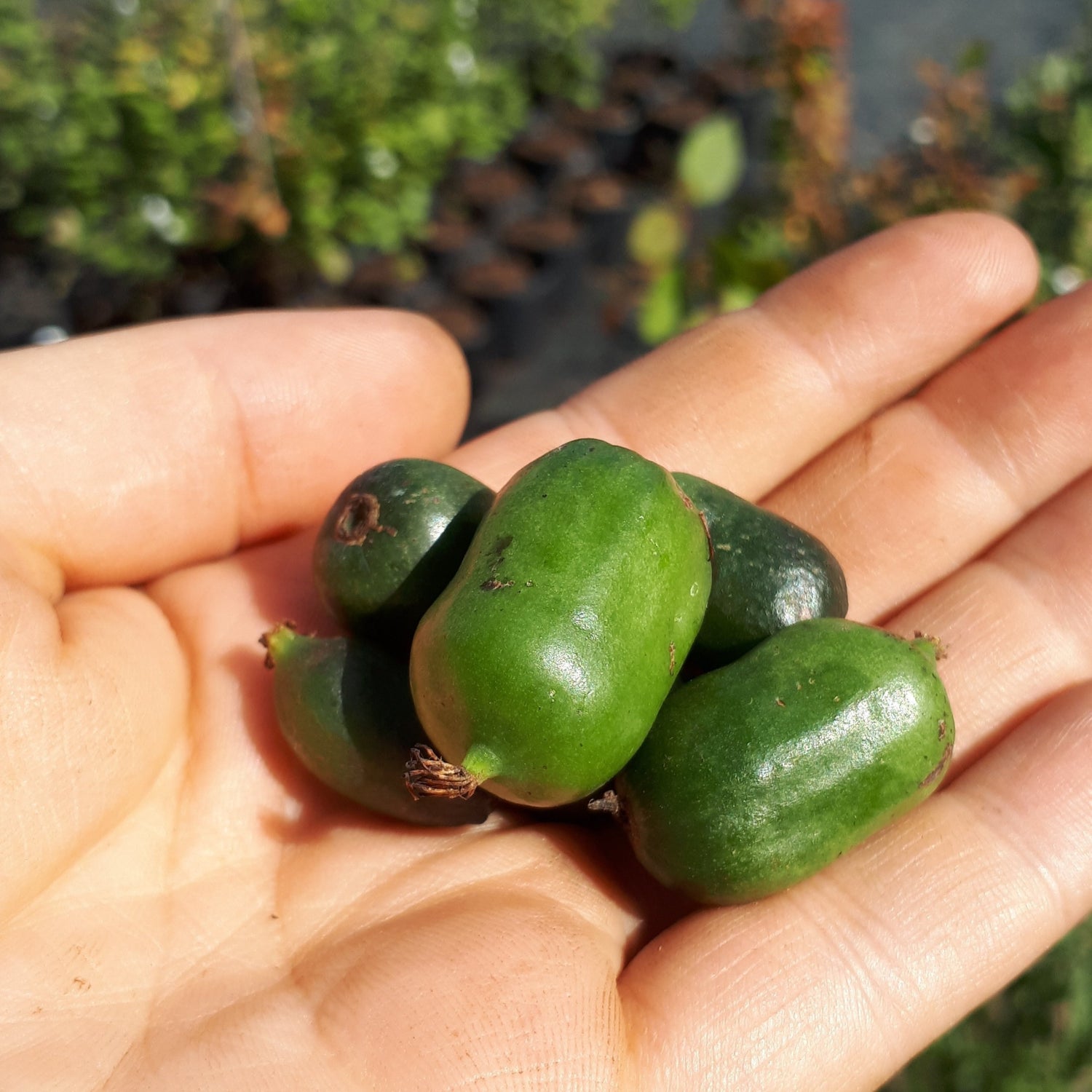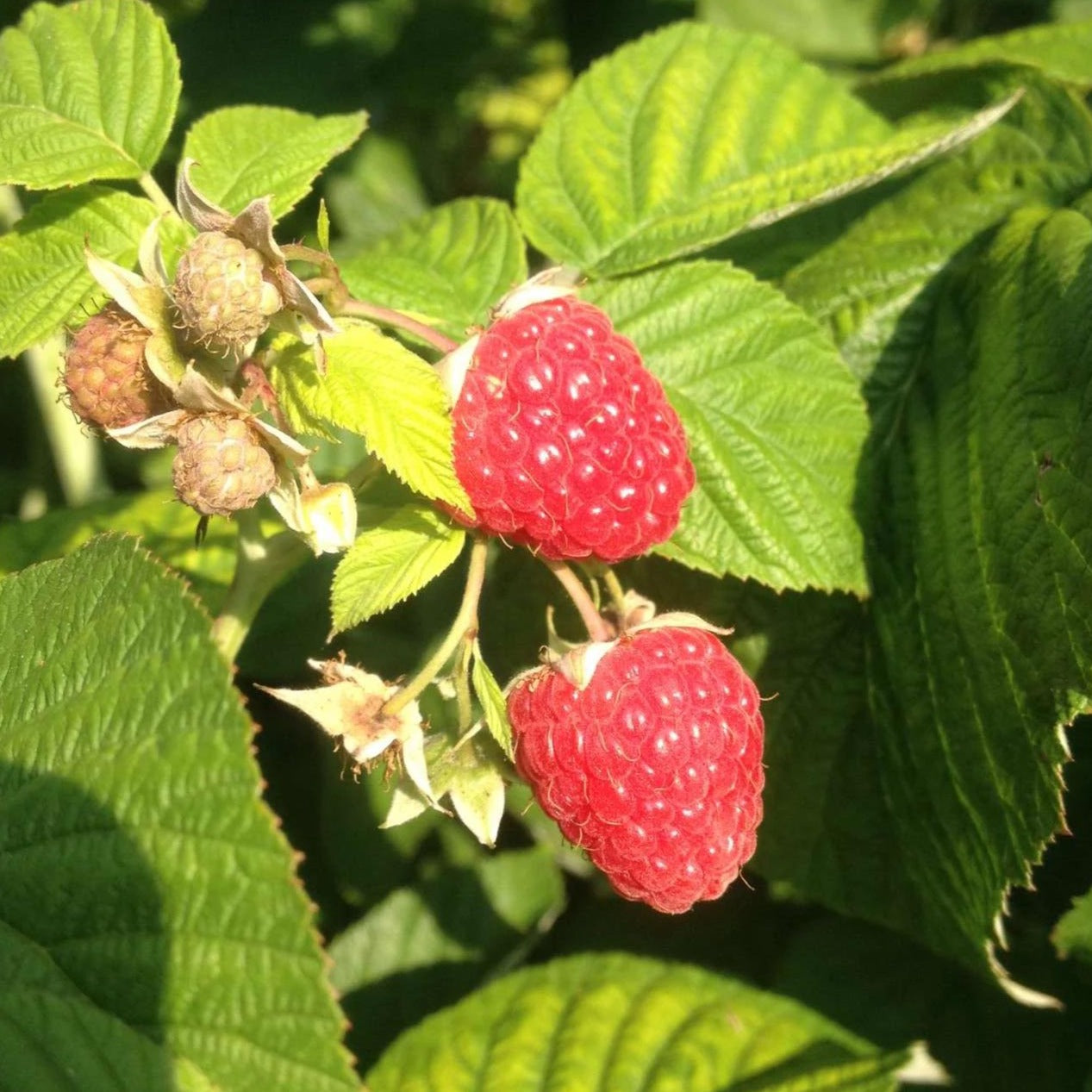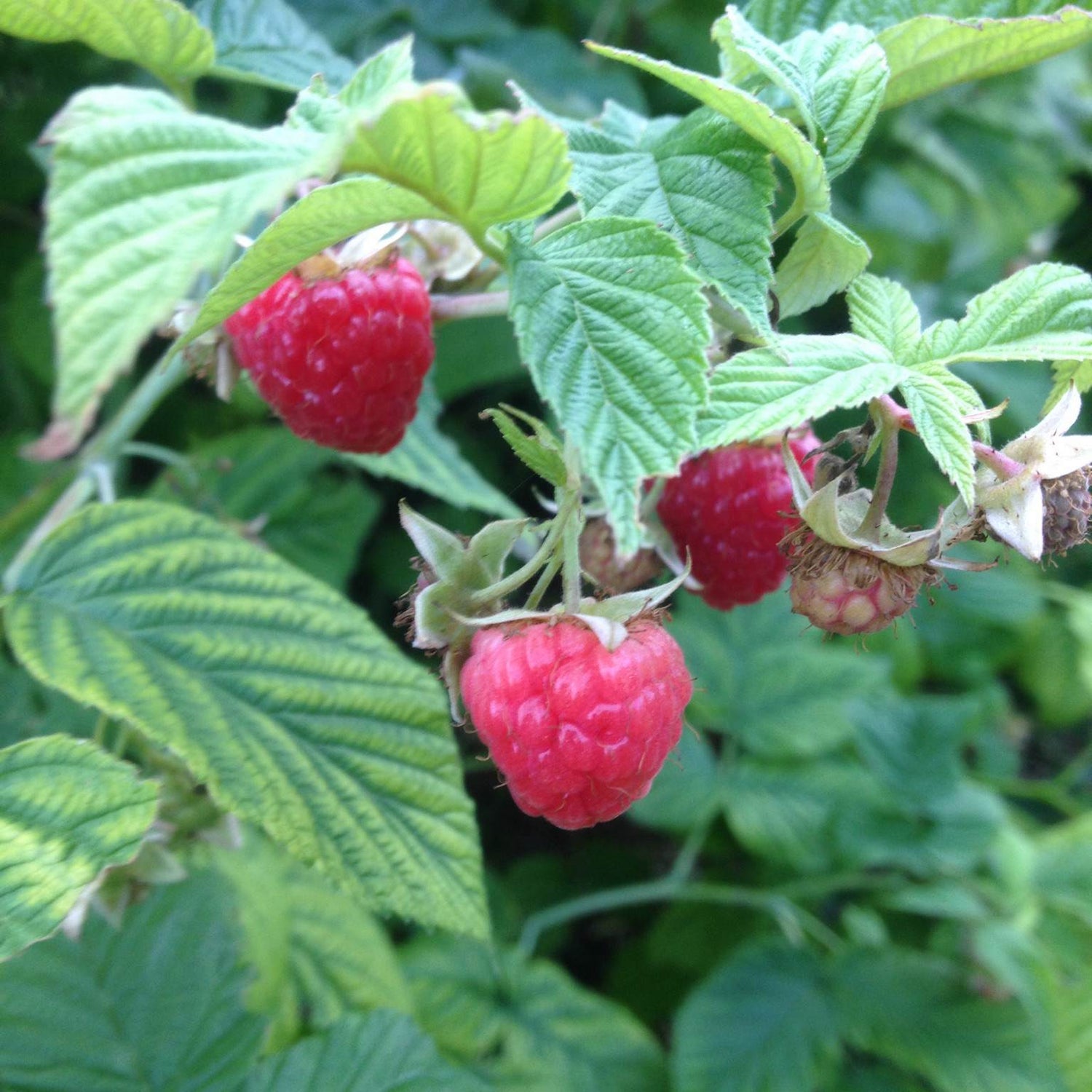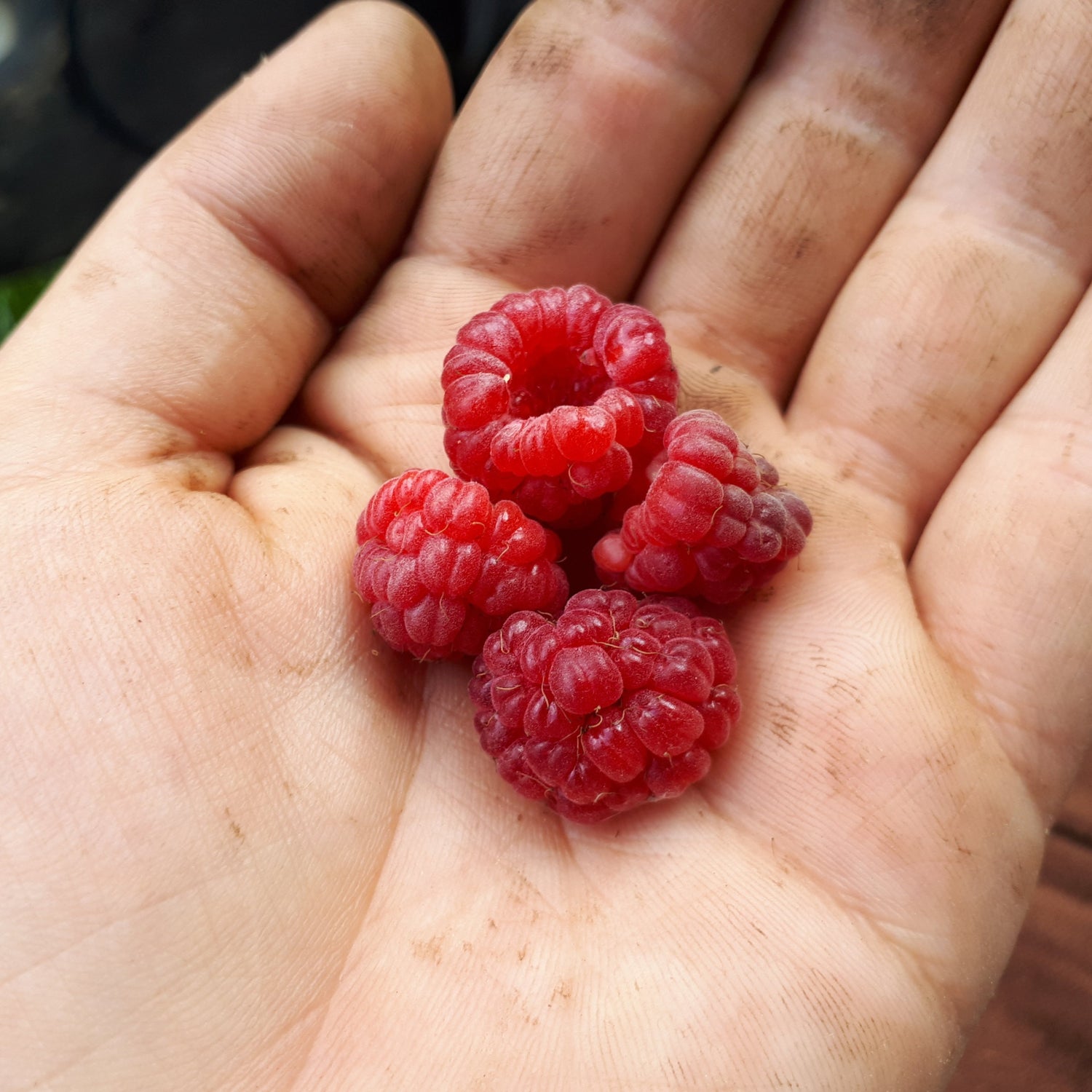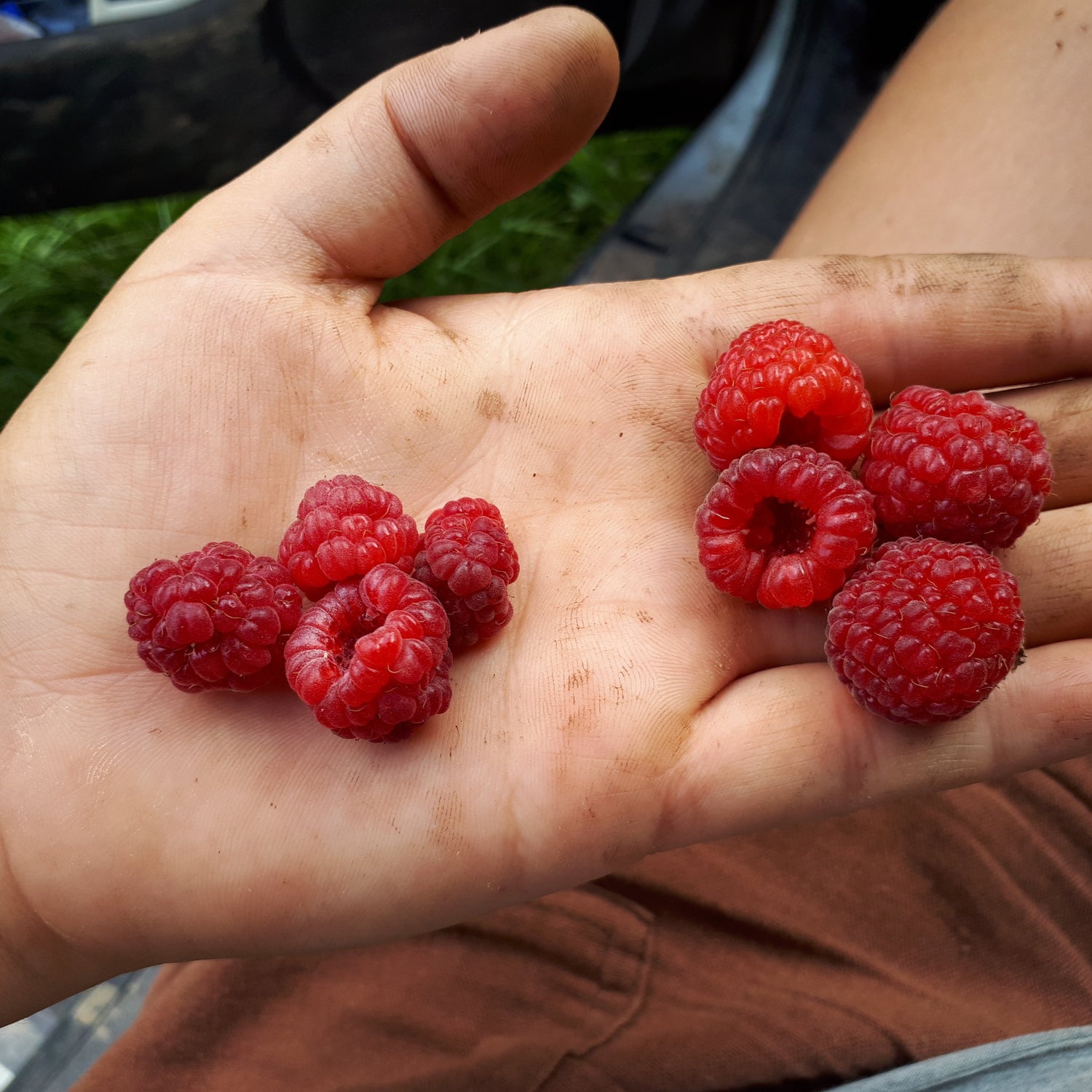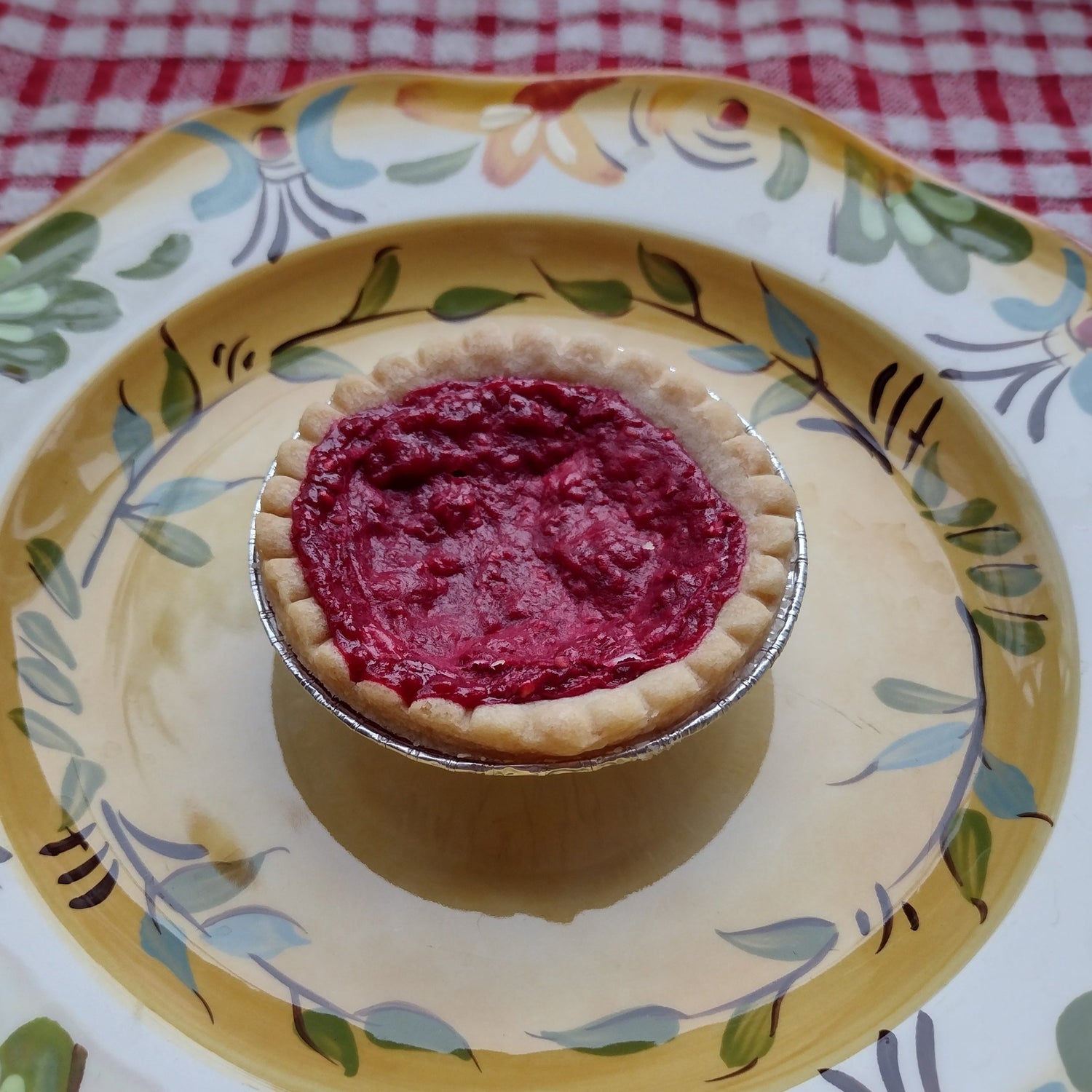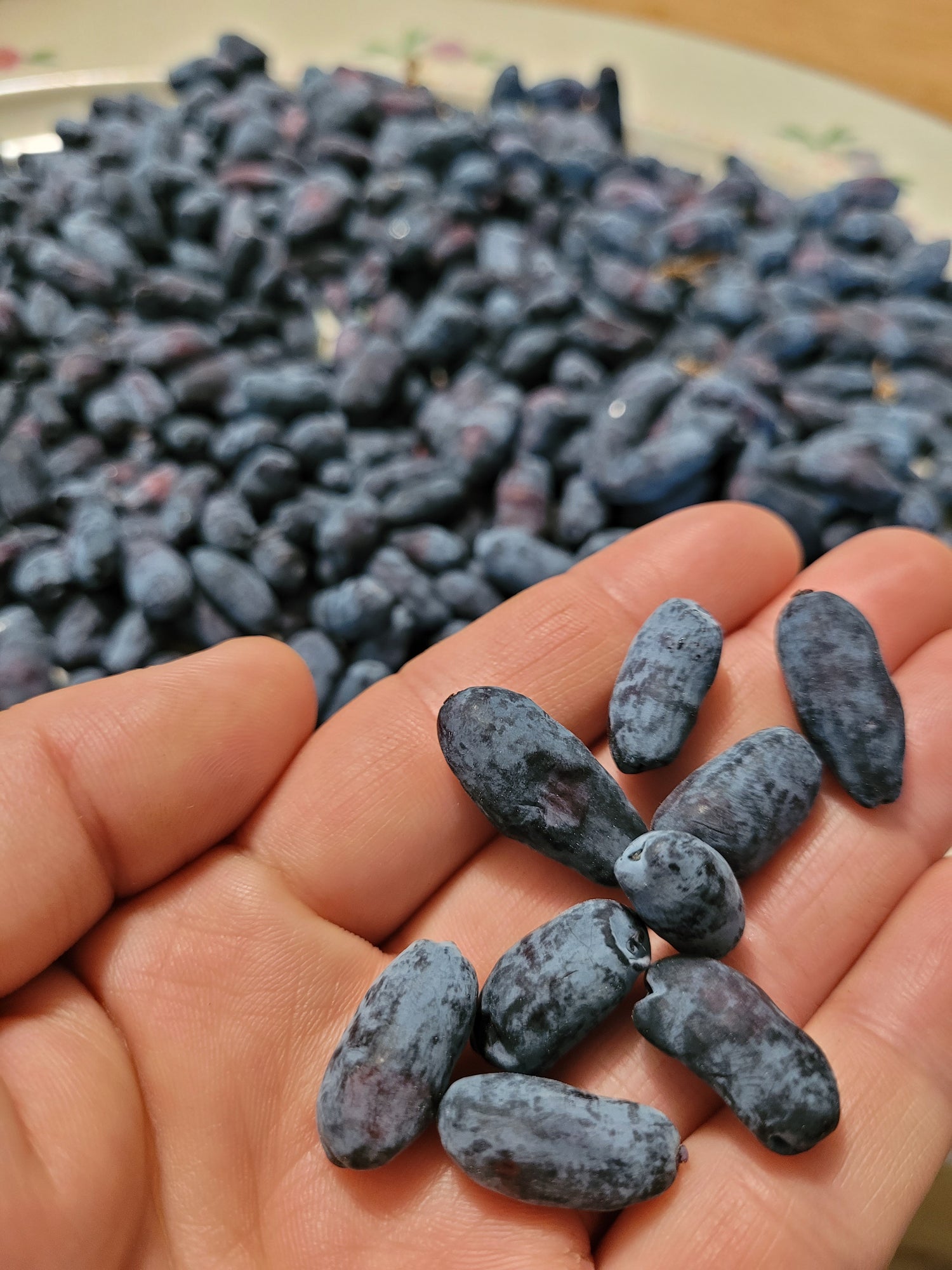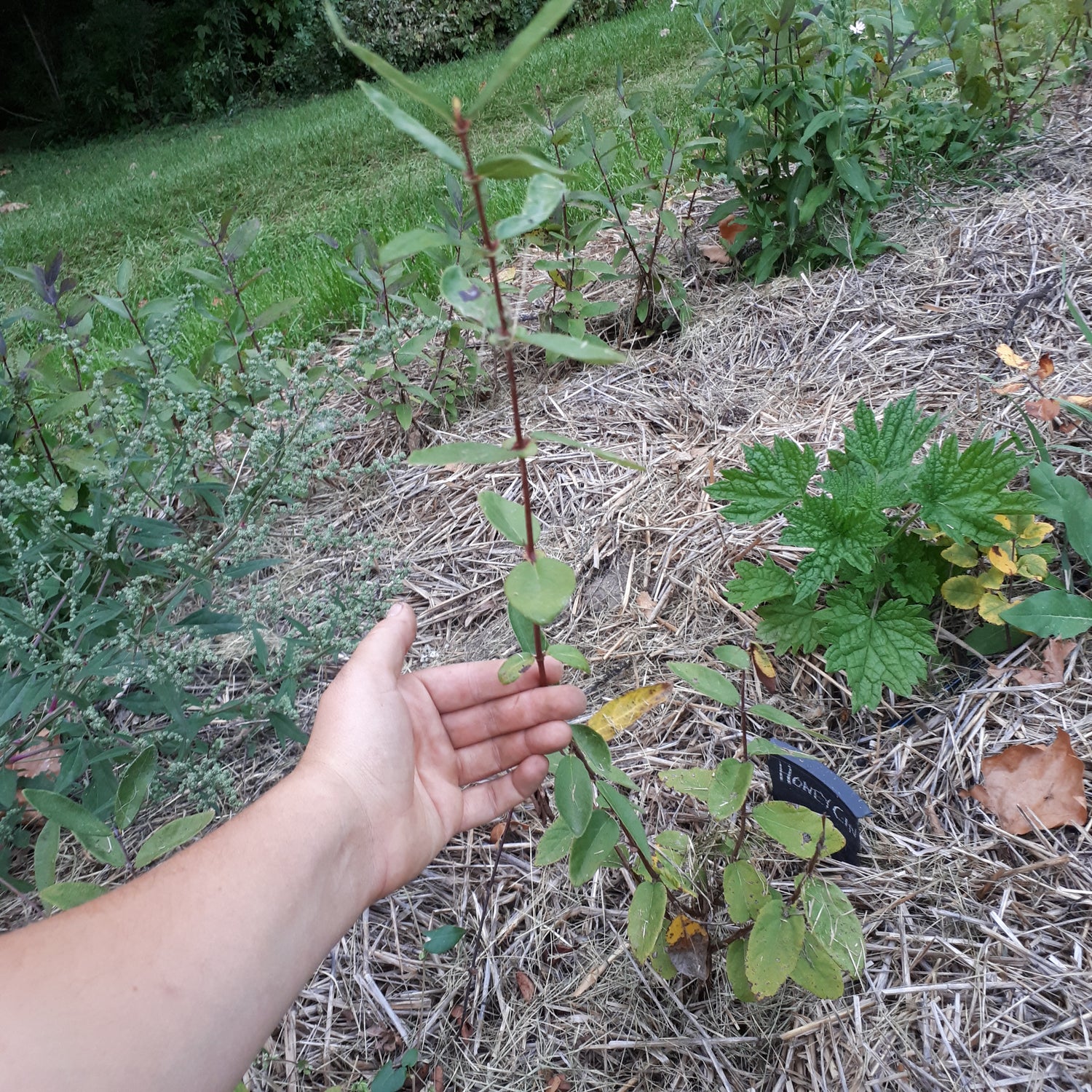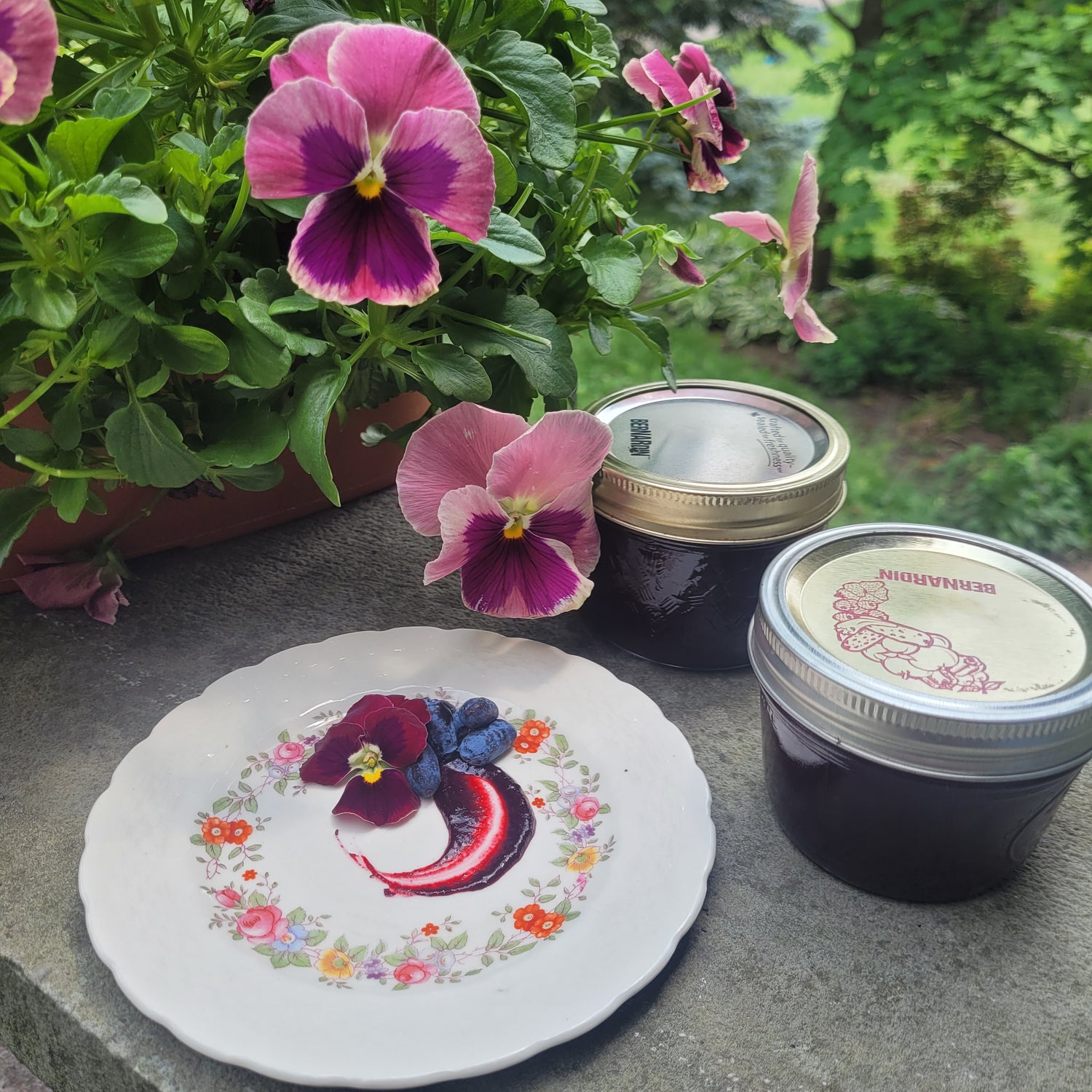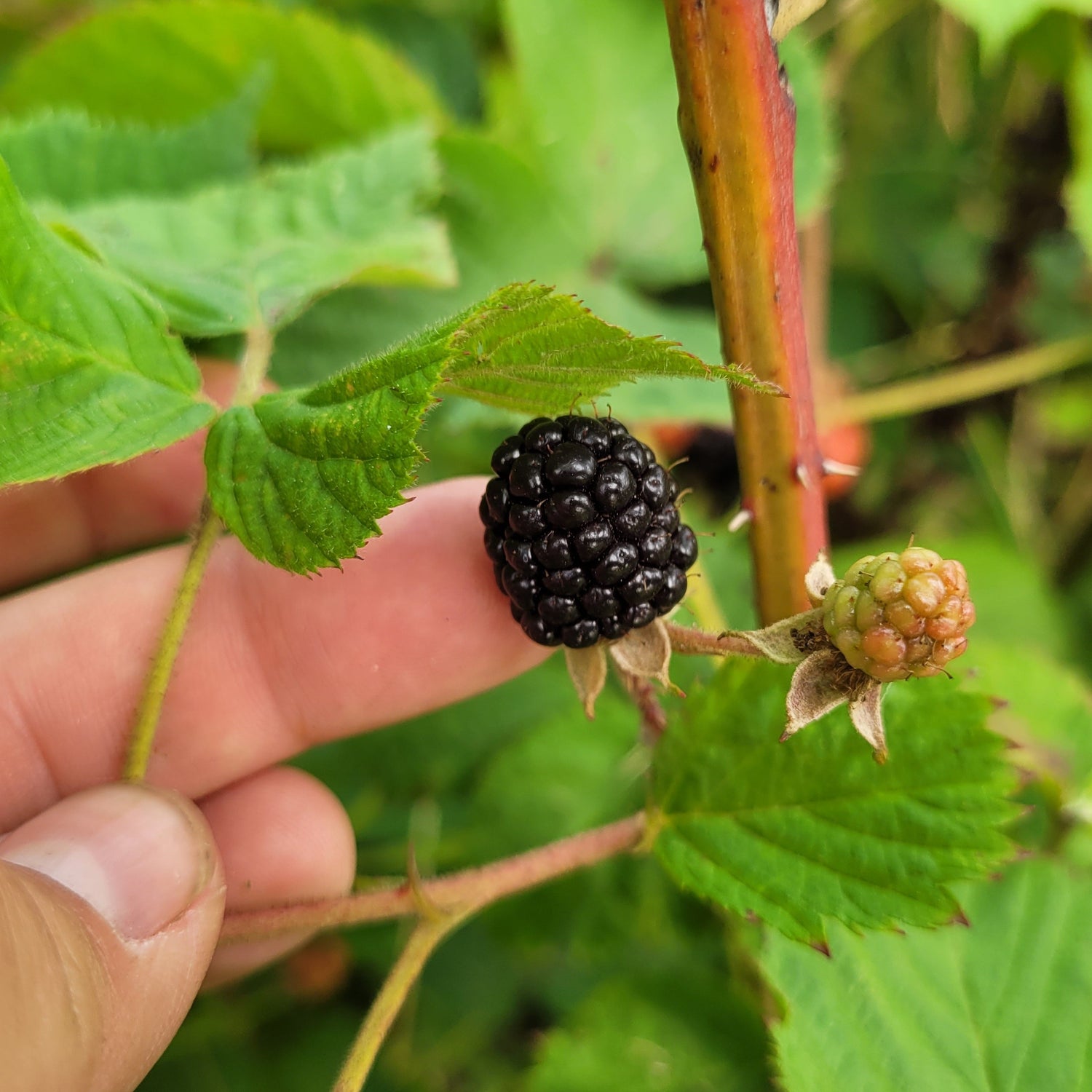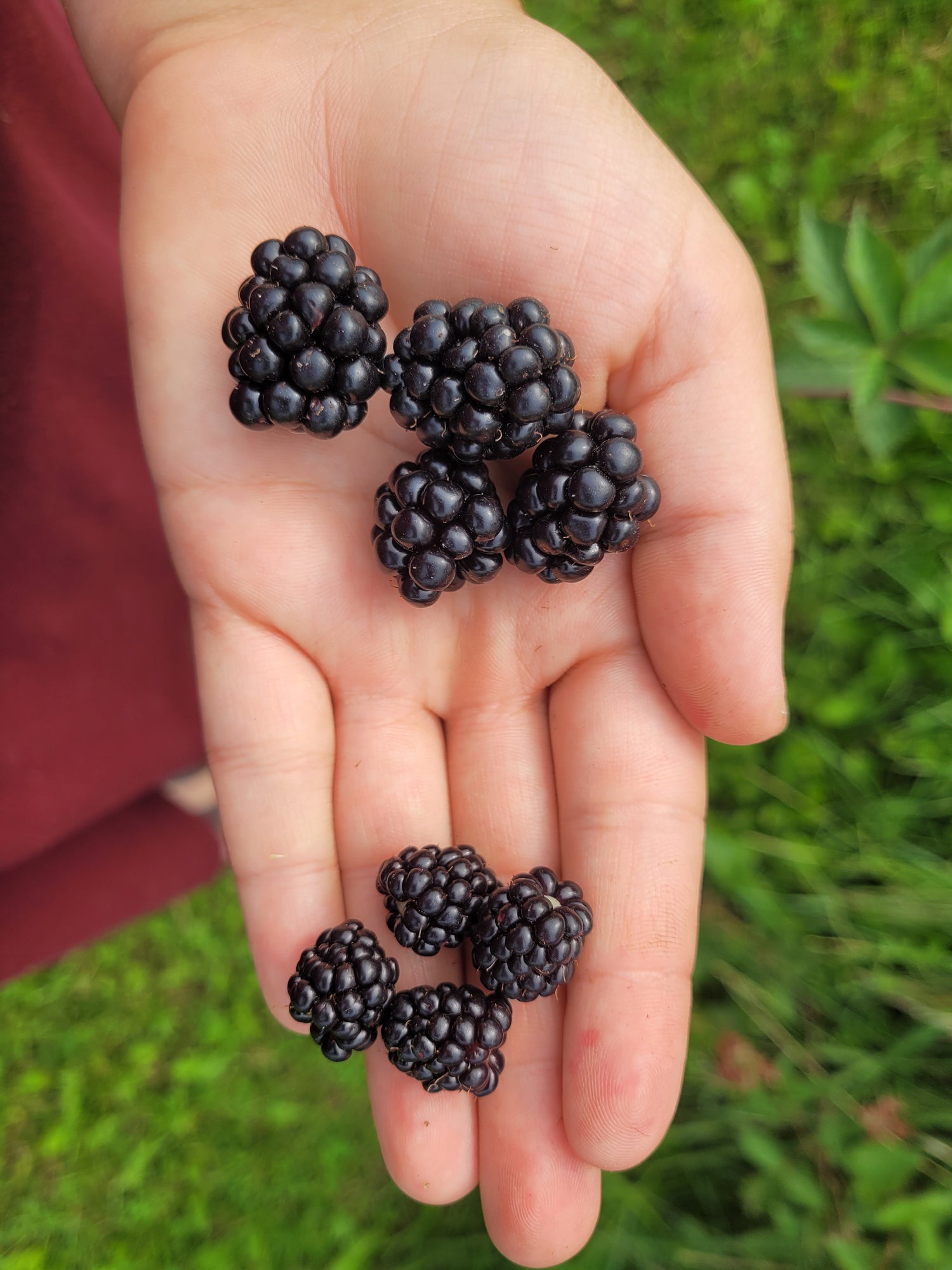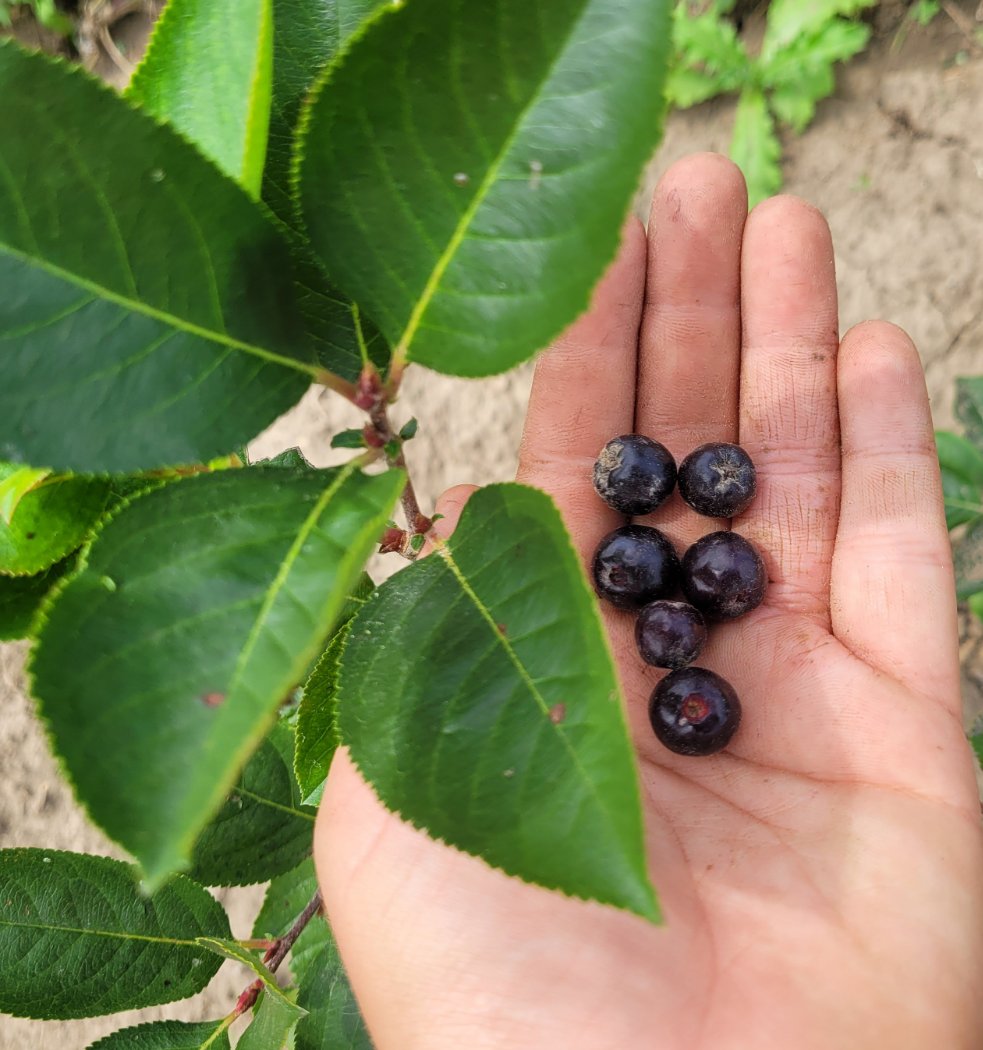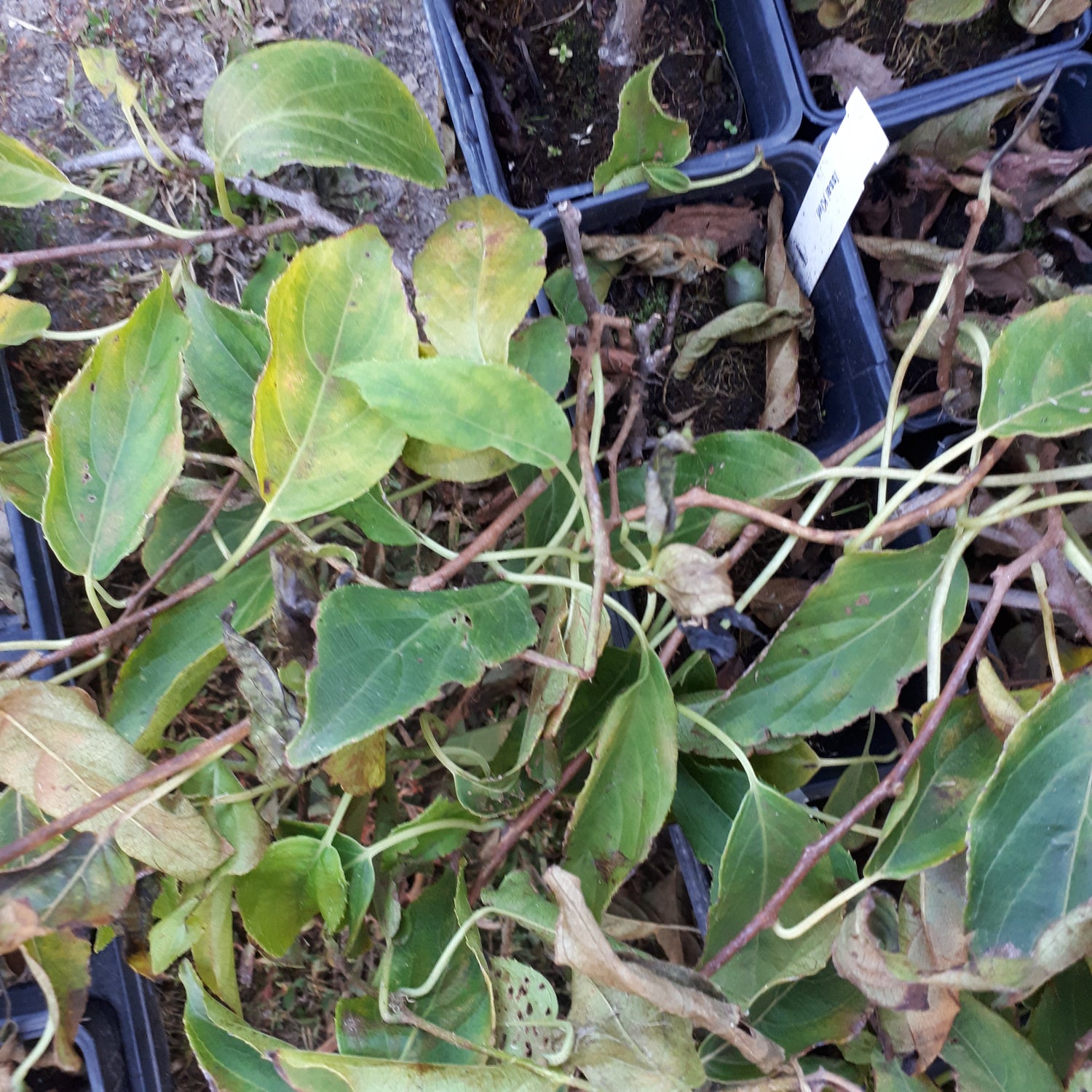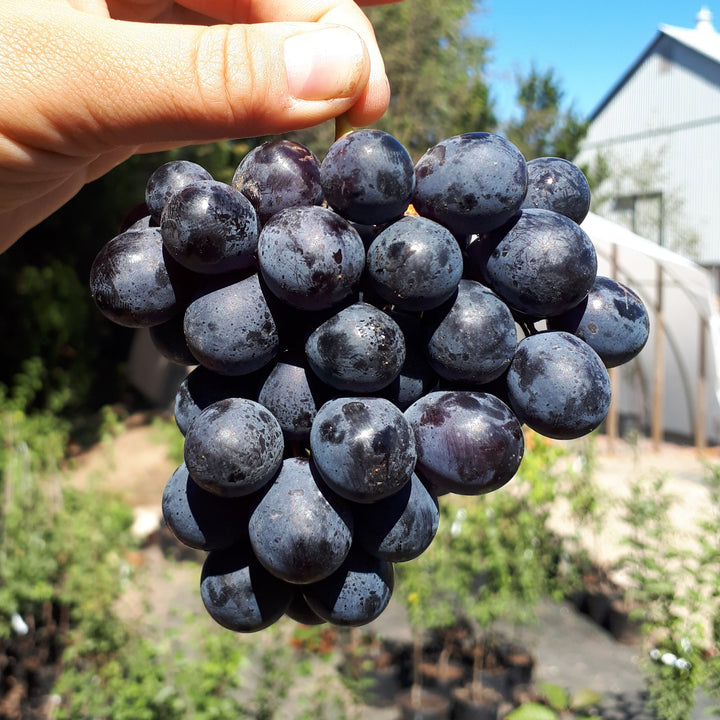Berries and Vines
Berries are a wonderful addition to the orchard, adding depth in many ways: enriching the ecosystem, lengthening the harvest window, bringing more flavours and nutrients into your kitchen. You can't go wrong with adding some of these wonderful options to your landscape (and palate)!
Collections
Sort by:
52 products
52 products
Species: Lonicera caerulea
History: Aurora haskap was developed at the University of Saskatchewan. After a decade of breeding and trials, it was released in 2012. It was originally selected as a pollinator for Borealis haskap but its superior flavour and greater productivity compared to other varieties quickly made it more popular.
Why We Grow It: A sweetly flavoured favourite! Aurora tastes like a cross between a raspberry and a blueberry, with a satisfying chewy texture. The deep blue fruit are 3 cm long and juicy. Allow to sit out a few days after picking for optimally sweet fruit.
Species: Vaccinium corymbosum
History: Blueray higbush blueberry was introduced in 1941, although there is little other information on its origins. It may have originated in New Jersey where blueberry cultivation began.
Why We Grow It: Blueray produces an abundant crop of very large berries with good flavour. This cold hardy variety is great for home growers! Blueberries are great for baking, for example Steph made some wonderful black currant and blueberry tarts that are pictured here!
Species: Lonicera caerulea
History: Boreal Beast was developed by Bob Bors at the University of Saskatchewan as part of the Boreal series of haskaps. The goal of the Boreal series is to cross haskaps from Russia, Japan, and the Kuril Islands to create superior cultivars with the best qualities of all three strains. Boreal Beast was rated very highly for flavour in the breeding program. Named after Beauty and the Beast, Boreal Beast was intended to be the pollination partner for Boreal Beauty but in practice it has been found that their pollination times don't quite overlap.
Why We Grow It: Boreal Beast is noted for its excellent flavour with a great aroma and pleasant aftertaste. The shrub itself is quite vigorous and sturdy, and produces good-sized crops of delicious medium-sized berries.
Species: Lonicera caerulea
History: Boreal Beauty haskap is part of the Boreal series of haskaps developed by Bob Bors at the University of Saskatchewan. The goal of the Boreal series is to cross haskaps from Russia, Japan, and the Kuril Islands to create superior cultivars with the best qualities of all three strains. Boreal Beauty was released in early 2017, chosen for its large size, firmness, and good flavour. Its name, a reference to Beauty and the Beast, was meant to be a handy way to remember that Boreal Beast is the recommended for pollination partner for this variety, but in practice unfortunately the two don't overlap quite enough for pollination to be optimal.
Why We Grow It: Boreal Beauty sports large berries that are more oval-shaped and firm than other haskaps while maintaining with good flavour. This variety could show promise for mechanical harvesting. It is also quite vigorous and produces heavy crops.
Species: Lonicera caerulea
History: Boreal Blizzard was developed by Bob Bors at the University of Saskatchewan as part of the Boreal series of haskaps. The goal of the Boreal series is to cross haskaps from Russia, Japan, and the Kuril Islands to create superior cultivars with the best qualities of all three strains. While Boreal Blizzard is only a cross between Russian and Japanese varieties, it has produced some of the largest berries the breeding program has seen while boasting good flavour!
Why We Grow It: Boreal Blizzard produces exceptionally large berries that are meaty and sweet. This heavy cropper is ideal for U-pick operations and small farms where the larger berries make them more suitable for hand-picking.
Species: Vitis riparia x Vitis labrusca
History: Brianna was bred by renowned grape breeder Elmer Swenson as a cross between Riverbank grape (V. riparia) and Fox grape (V. labrusca) as part of his effort to create high-quality grapes that were cold hardy enough to be grown in the cooler parts of North America. Brianna was first bred in 1983 on Swenson's farm in Wisconsin and released in 2001. It was named by Ed Swanson who was planning on naming it Brian due to its vigour but chose Brianna instead, believing the feminine name was more fitting for white wine.
Why We Grow It: Brianna is a seeded green grape with an excellent complex fruity flavour that has hints of grapefruit and pineapple. The medium-large green fruit is suitable for fresh eating or making wine or juice. This variety boasts good disease resistance, vigorous growth, and begins producing fruit at a young age.
Species: Vaccinium corymbosum
History: Chandler higbush blueberry was introduced in 1995. It originated in Corvallis, Oregon where it was developed by the United States Department of Agriculture's Agricultural Research Service agency's (USDA-ARS) Blueberry Breeding Program.
Why We Grow It: Chandler produces the largest blueberries in the commercial industry, and plenty of them! They are sweet and juicy despite their size and can be harvested over a long period of time. Blueberries are great for baking, for example Steph made some wonderful black currant and blueberry tarts that are pictured here!
Species: Actinidia arguta
History: Changbai Giant kiwis were discovered by the Changbai Mountain Research Institute of the Chinese Academy of Agriculture near the North Korean border. The variety was likely collected and propagated due to its unusual round shape and excellent flavour. Named for the Changbai Mountains where it was discovered, its name translates literally from Mandarin as 'perpetually white.' It is also named for the exceptionally large fruit it produces.
Why We Grow It: Aside from its interesting origins, Changbai Giant also boasts unusually shaped kiwis compared to other varieties: round like an apple rather than more oblong like other hardy kiwis. The fruit is also very sweet and the plant itself is a little hardier than some other varieties. Like other female varieties, it can produce a large crop of fruits and it is recommended that the vine be grown on a trellis or other kind of support.
Species: Actinidia arguta
History: Geneva hardy kiwi was discovered growing in the Dr. Slate collection near the Cornell Experimental Station in Geneva, New York. It is named after the city of Geneva. A series of Geneva kiwis was bred and Geneva 3 was selected as the best-performing amongst all of them.
Why We Grow It: This variety produces medium-sized fruit with smooth skin so you can eat the whole kiwi! The delicious, honey-scented fruit can be enjoyed out of hand like grapes or made into preserves. You can also use it make a delicious and nutritious popsicle by pureeing it with some applesauce (or your favourite fruit) and a dab of honey, pouring it into molds, and freezing it. This vigorous vine can reach up for 40' long, so be prepared to prune, or trellis over 50lb of fruit per season.
Species: Rubus sp
History: These red raspberries were grown by our great-grandmother and have been passed down through the family.
Why We Grow It: We might be a little biased, but we think they have superior flavour! The fruit is very uniform, not crumbly, and holds its shape well fresh or frozen.
A note on the "Grandma" Series: Inspired by Ken's 'Grandma Ethel Black currant', we decided to curate our own repertoire of random (may be a cultivar from long ago, or a favoured seedling) berries that have become family favourites! Check out our tried-n-true rhubarb and gooseberries in addition to the currants and raspberries.
Species: Rubus sp.
History: Heritage raspberries were developed by Cornell University in New York and introduced in 1969. It is one of the most widely grown raspberry varieties in the world due to the quality of its fruit and its extended bearing season. This variety is considered the standard for everbearing varieties and in 2004 it even received the Outstanding Fruit Cultivar Award from the American Society of Horticultural Sciences.
Why We Grow It: On top of the accolades mentioned above, these medium-sized red berries can also be harvested within the first year! You can enjoy them fresh or in baked goods, or freeze, dry, or preserve them to enjoy in the winter months. We find these to be sweeter than Nova, but with a milder flavour and slightly crumbly texture. The canes are thorny so exercise caution when working around this variety! You can cut down the canes in the winter for a large fall crop, or enjoy a more spread out crop from June to September. We have found cutting the patch down annually also helps with borer problems.
The second product photo shows Nova (right) compared to Heritage (left).
The third photo shows a Heritage and Nova raspberry tart Steph made!
Species: Lonicera caerulea
History: Little is known about the origins of Honey Gin aside from the fact it originated in Russia.
Why We Grow It: This variety boasts a unique sweet flavour with hints of smoked plum. Honey Gin's berries are 2cm long and deep blue and juicy. They can be used in a wide variety of ways such as fresh eating or cooking but are generally noted for their excellence in wine, gin, and vodka production.
Species: Rubus sp.
History: Illini Hardy was developed as a cold hardy variety by the University of Illinois and released in 1988. It is a cross between Chester Thornless and NY 95.
Why We Grow It: This variety produces very large and abundant berries late in the summer. The dark berries are sweet with some tartness, resembling the flavour of wild blackberries. Its cold hardy nature makes it hard to turn down for Canadian growers.
Pictured on the left: top: Chester, bottom: Illini Hardy
Species: Rubus occidentalis
History: Jewel black raspberries were bred by Cornell University in New York in an effort to create productive and vigorous black raspberry varieties. It was bred in 1954 as a cross between Bristol and Dundee black raspberries.
Why We Grow It: Black raspberries are a special treat with less tang than red raspberries, and more of that musky sweetness that black berries (mulberries, blackberries, etc.) have. Steph eats these berries by the handful - delicious! This variety produces nice clusters of sweet juicy berries. The plant itself reaches about a meter high and wide. It can spread over the years, creating a most delicious fence line if you let it!
Species: Hippohae rhamnoides
History: Lord was developed by Latvian professor of agriculture, Andrejs Bruvelis, and was likely selected for its relatively few thorns and excellent performance as a pollination partner for female plants.
Why We Grow It: A vigorous and strong pollinator, Lord has silvery green leaves which may be used as animal fodder- rather than discarding prunings from the plant, try feeding them to birds, or better yet, let some chickens keep the base of the bush clean and sucker-free by purposefully pasturing them through your plants. Sea Buckthorn have nodules on their roots which help fix nitrogen into the ground, and are a common plant in permaculture orchards for this natural 'fertilizer' effect on plants in their vicinity.
Species: Amelanchier alnifolia (aka Western Serviceberry)
History: Martin was grown by Dieter Martin in Saskatchewan. He selected this variety for its large berries and uniform ripening time.
Why We Grow It: Martin produces deep purple berries that are both flavourful and juicy! The berries are on the larger size and ripen at more or less the same time, making them a good choice for mechanized picking.
Species: Hippophae rhamnoides
History: Mary sea buckthorn, aka Marija Bruvele, is a Latvian variety that was bred by professor of agriculture Andrejs Bruvelis as a cross between the female varieties Botanicheskaya Ljubitelskaya, Chuyskaya, and native male plants from the coastal area of the Baltic Sea. The goal was to create a variety better adapted to maritime climates. The berries are high in oil content so this variety tends to be grown commercially for oil production.
Why We Grow It: A prolific variety that holds onto berries well, prolonging harvest for 4-6 weeks. The berries have a milder flavour compared to other sea buckthorns with much lower acid content. They can be made into a sunshine yellow juice, best diluted 70% with water for a Canadian version of orange juice. It's also nearly thornless, which makes harvesting much easier.
The leaves and young branches are suitable for animal fodder, which we can attest to from the hens that run around our retail area in summer, sampling from our potted sea buckthorn plants whenever Steph isn't around to chase them away. Sea Buckthorn have nodules on their roots which help fix nitrogen into the ground, and are a common plant in permaculture orchards for this natural 'fertilizer' effect on plants in its vicinity.
Species: Aronia melanocarpa
History: McKenzie was created by the USDA who, in 1976, planted several seedlings of the variety to evaluate its performance. It was named 'McKenzie' in honour of its first planting site in North Dakota, possibly named after McKenzie County specifically. The variety was officially released in 2008.
Why We Grow It: McKenzie boasts vigorous growth and good production, reliably producing firm blue-black fruit that is tart with an earthy taste. The berry clusters are easy to pick and have a wide range of uses! While the berries ripen in August, they can hang onto the bush for a couple months and tend to sweeten over time.
Species: Actinidia arguta
History: Meader hardy kiwi likely originated in Korea and was brought back to New Hampshire by botanist Edmund Meader, after whom it was named, in the 1960s. Meader has become one of the most common varieties of hardy kiwi since.
Why We Grow It: Meader is a male hardy kiwi, making it excellent for pollinating female varieties like Geneva and increasing pollination for Issai. Meader produces lovely flowers, but no fruit.
Interested in some more in depth info? Check out this article from the Maine Organic Gardeners and Farmers Association.
Species: Vitis sp. (hybrid)
History: Montreal Blues is one of the many varieties created by renowned grape breeder Elmer Swenson in Osceola, Wisconsin, as part of his effort to breed cold hardy grapes suitable for growing in the colder climates of North America. This variety was released in 1998 and in some areas is also known as St. Theresa, named for Saint Therese of Lisieux who was a French nun who planted flowers to show her love of God.
Why We Grow It: This variety produces large clusters of blue, Concord-like grapes with a nice, mild sweet flavour. They are quite cold hardy and can be made into pies, jams, or juice!

